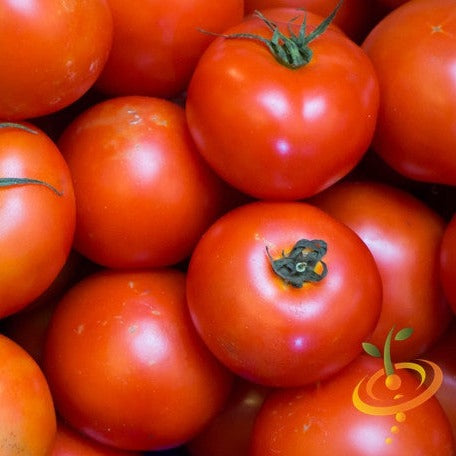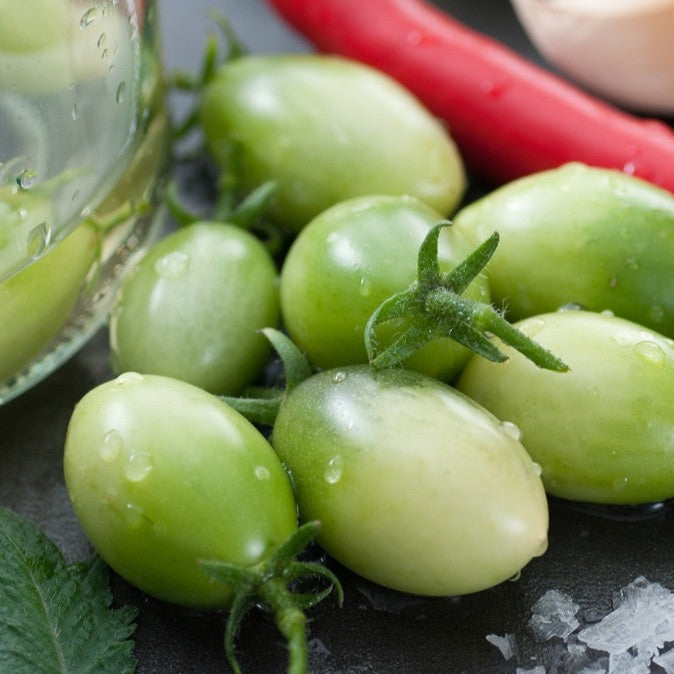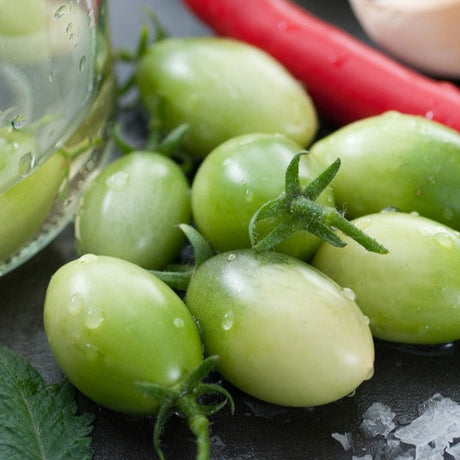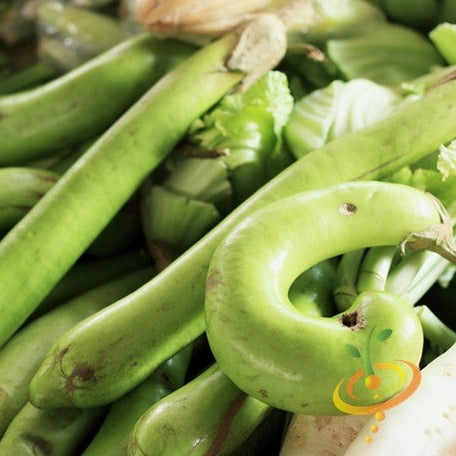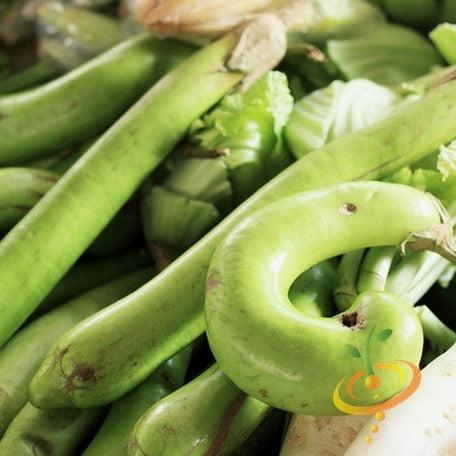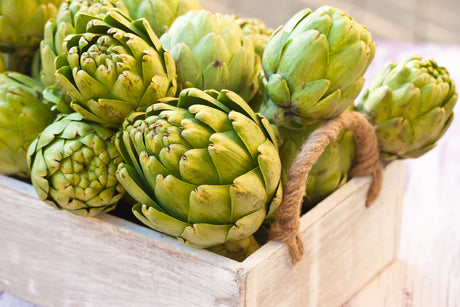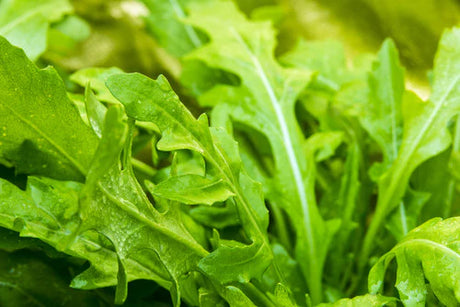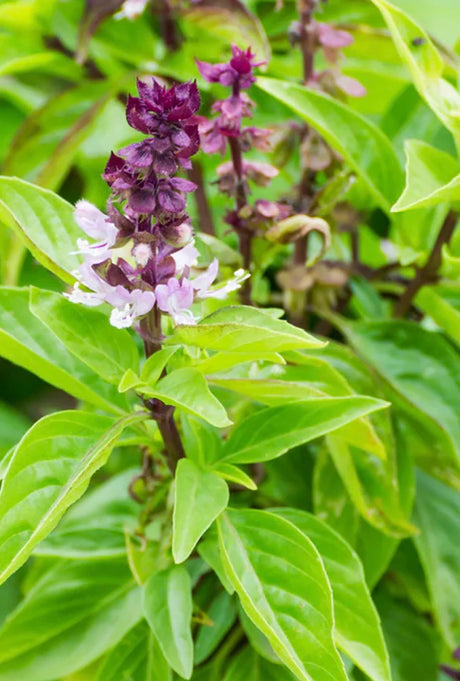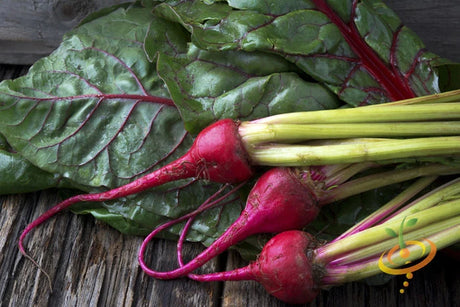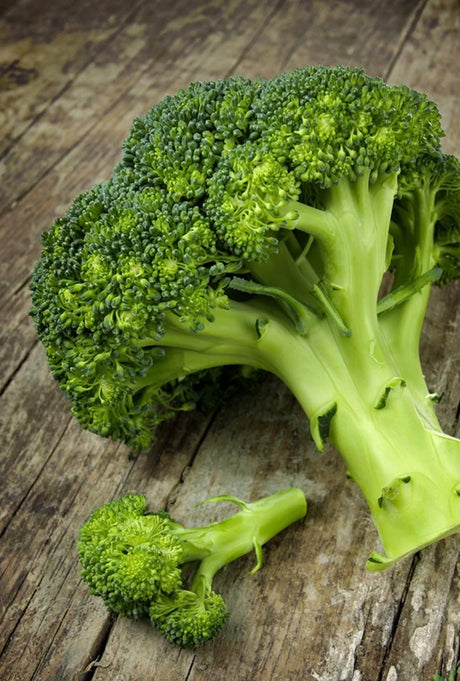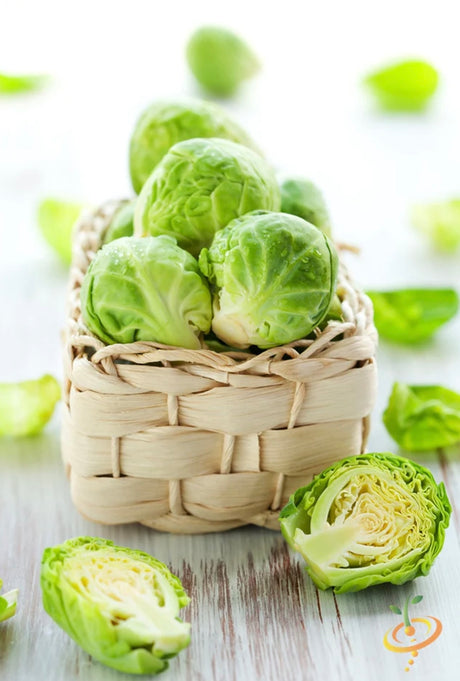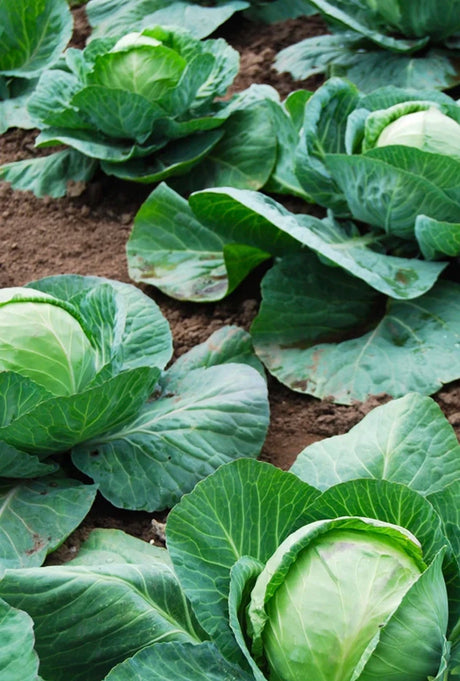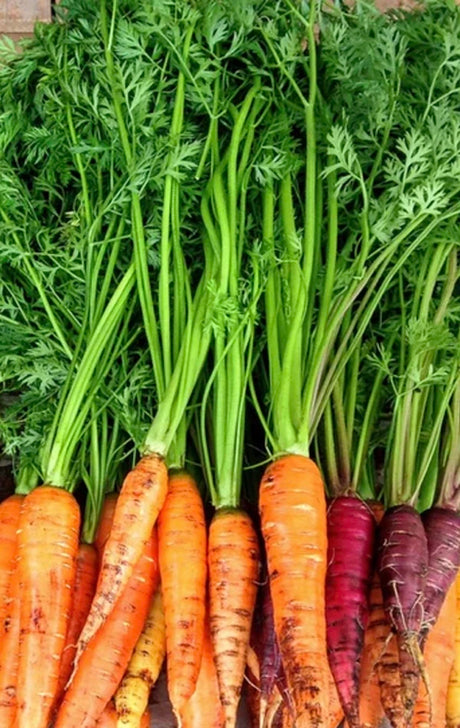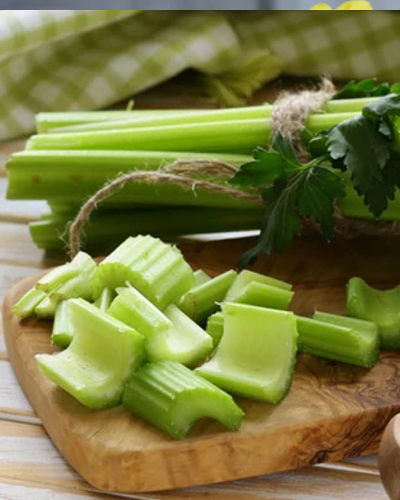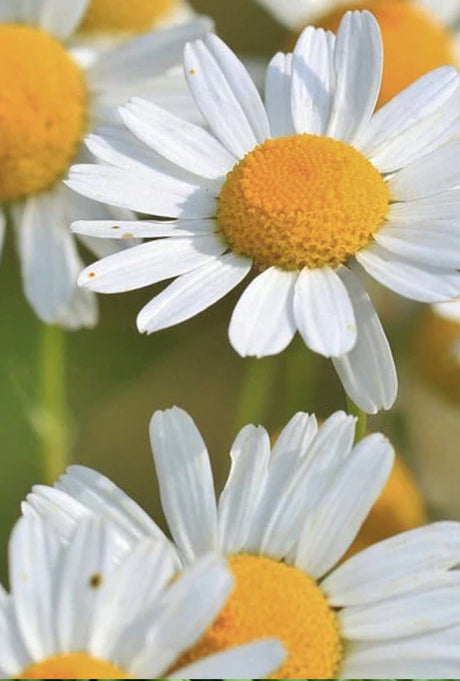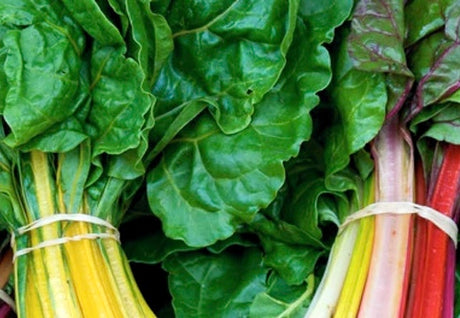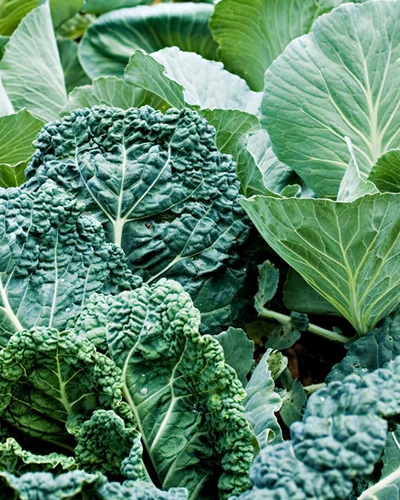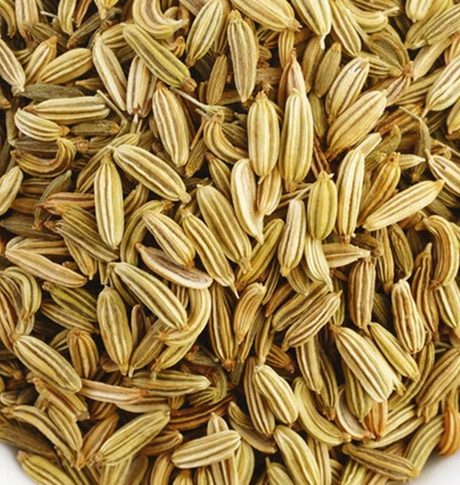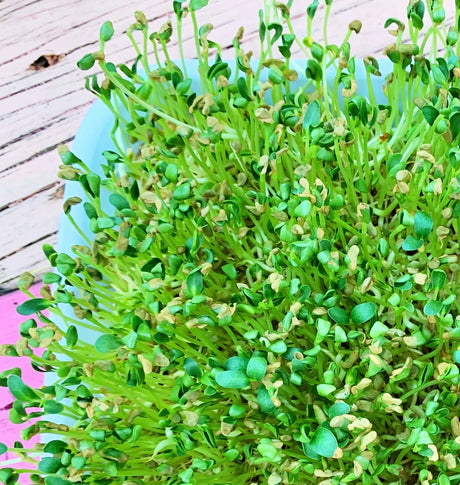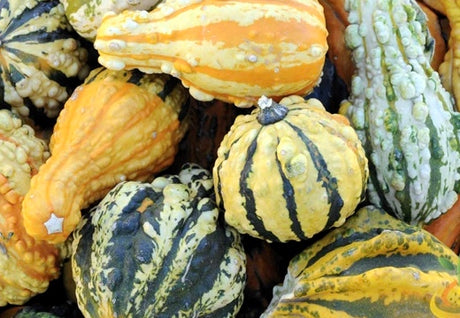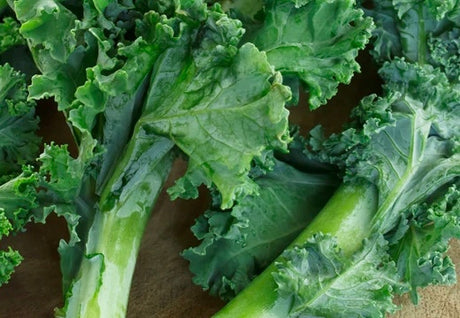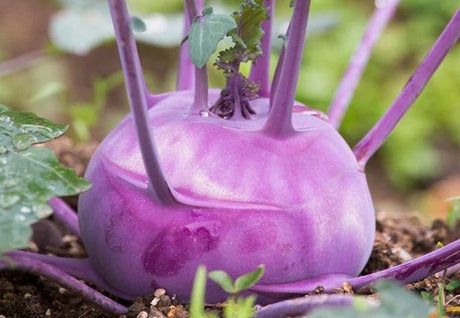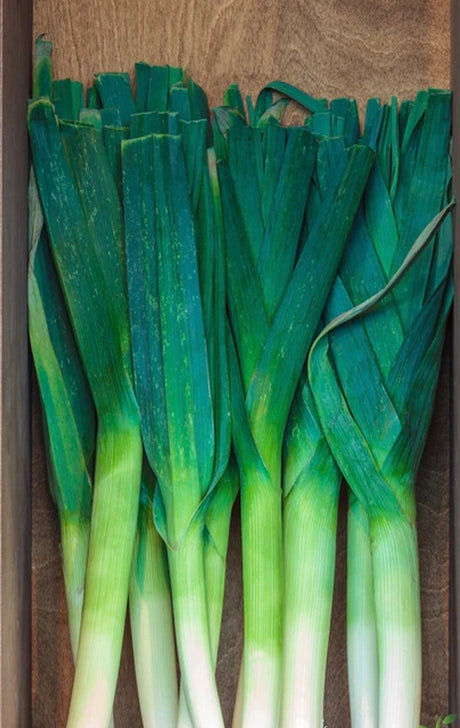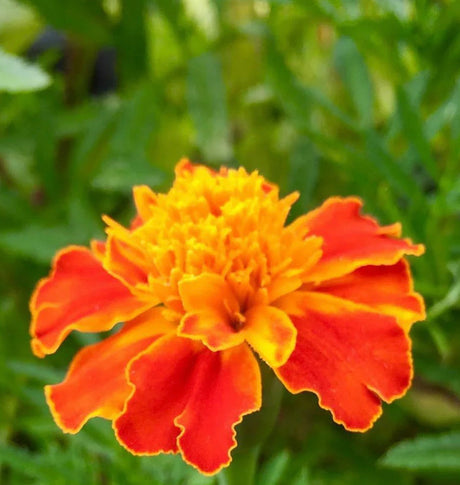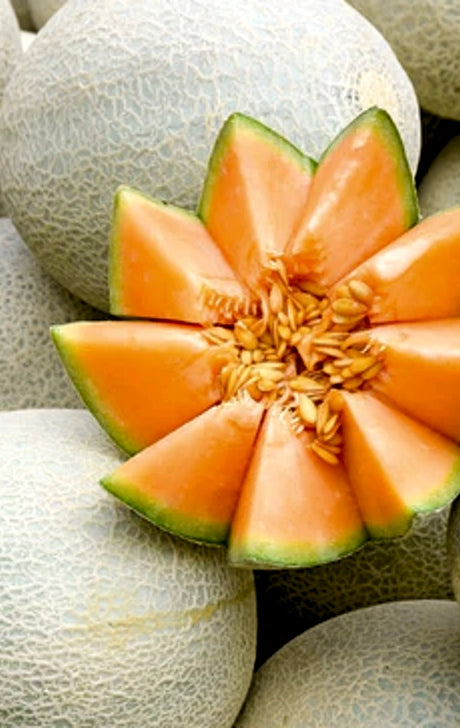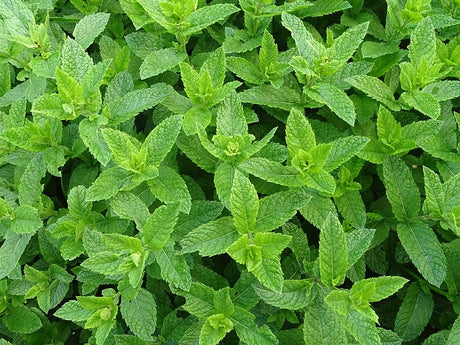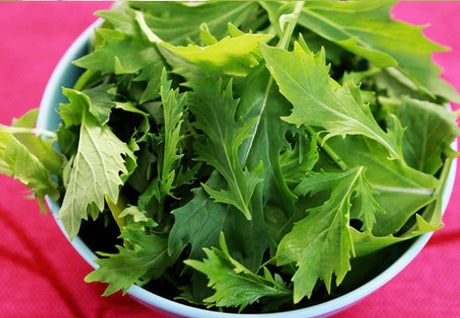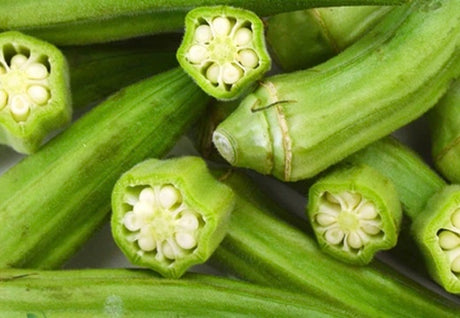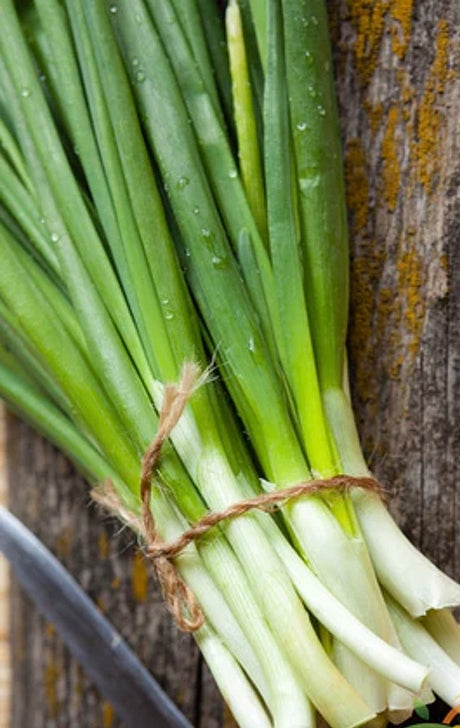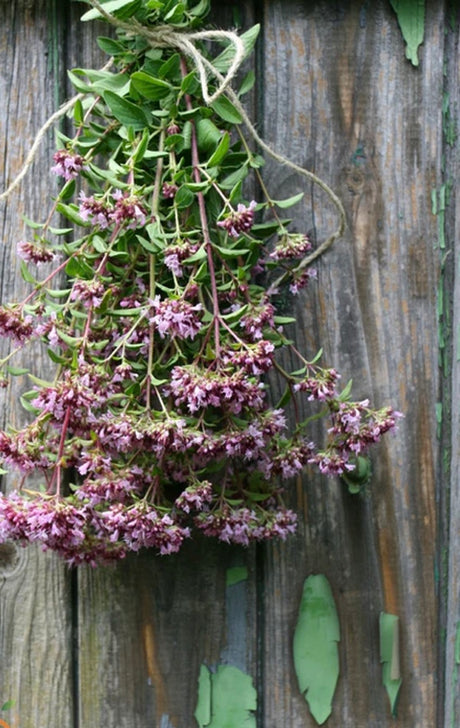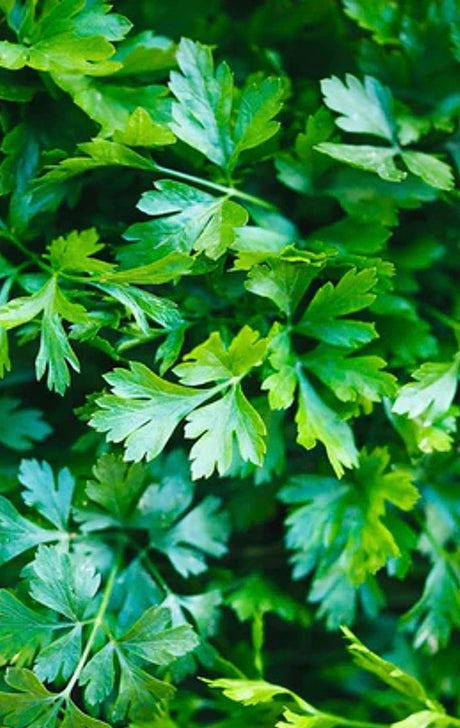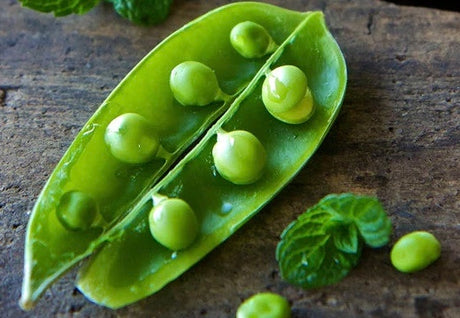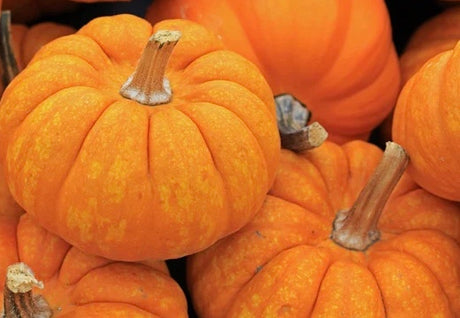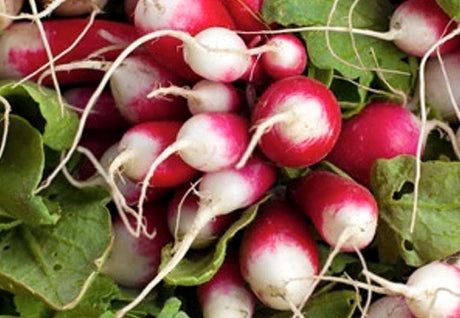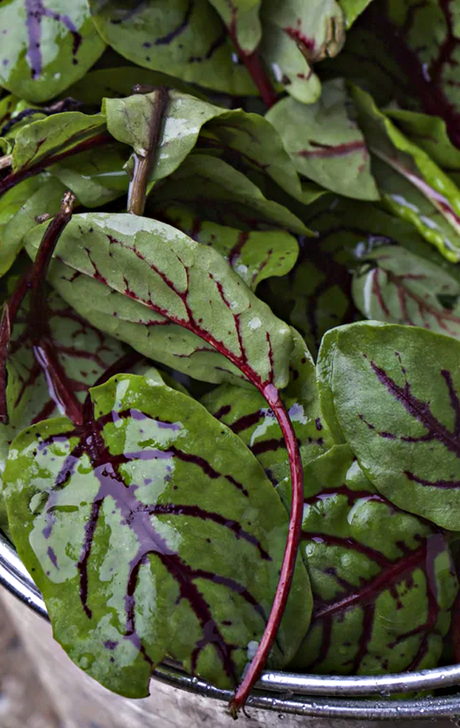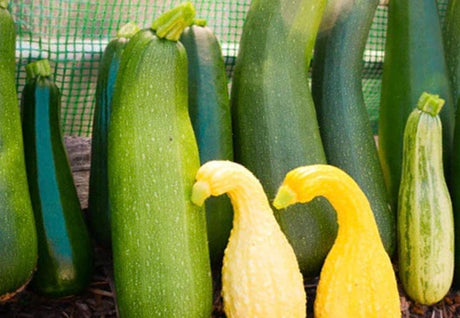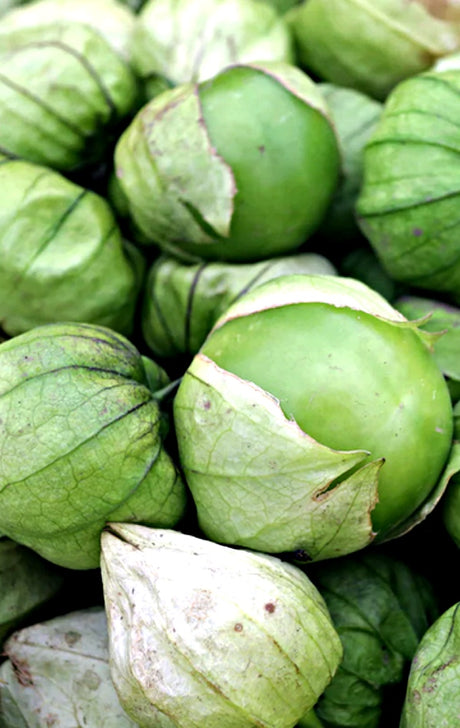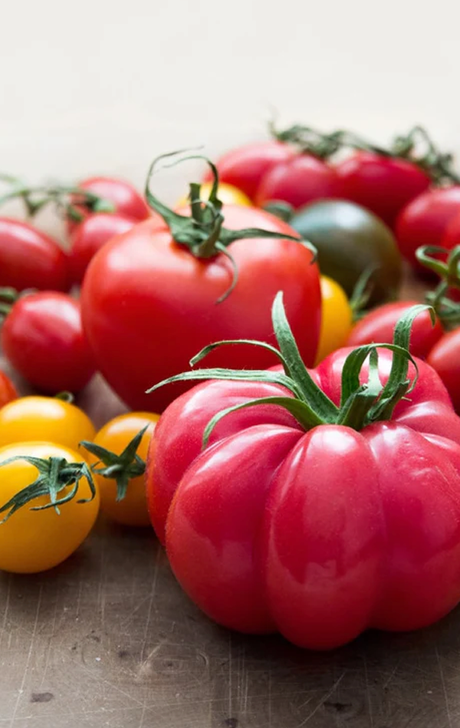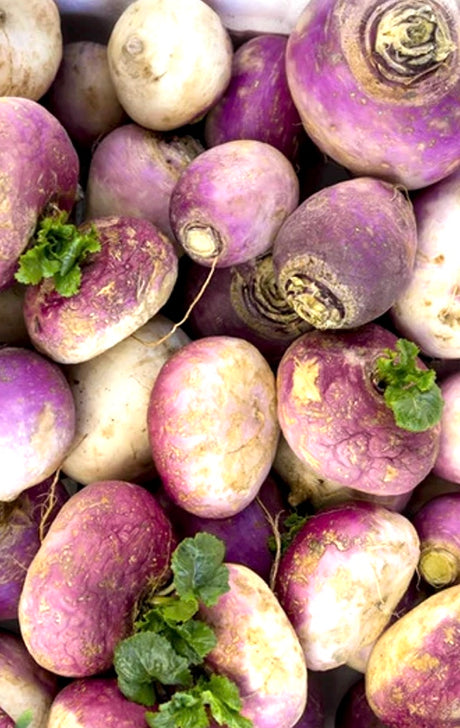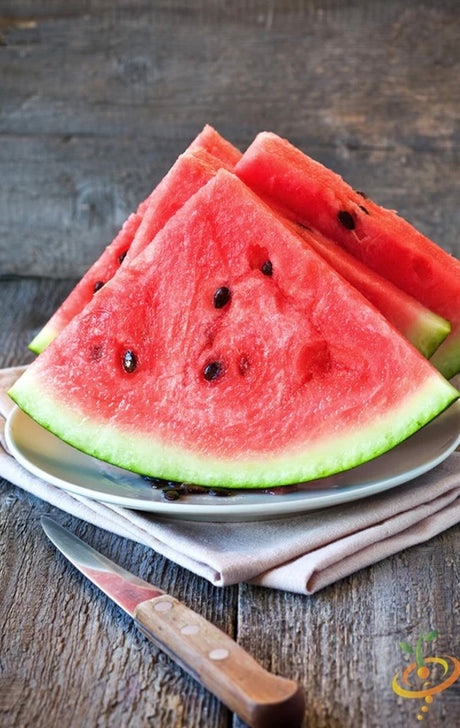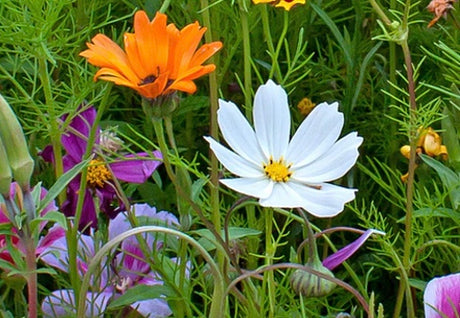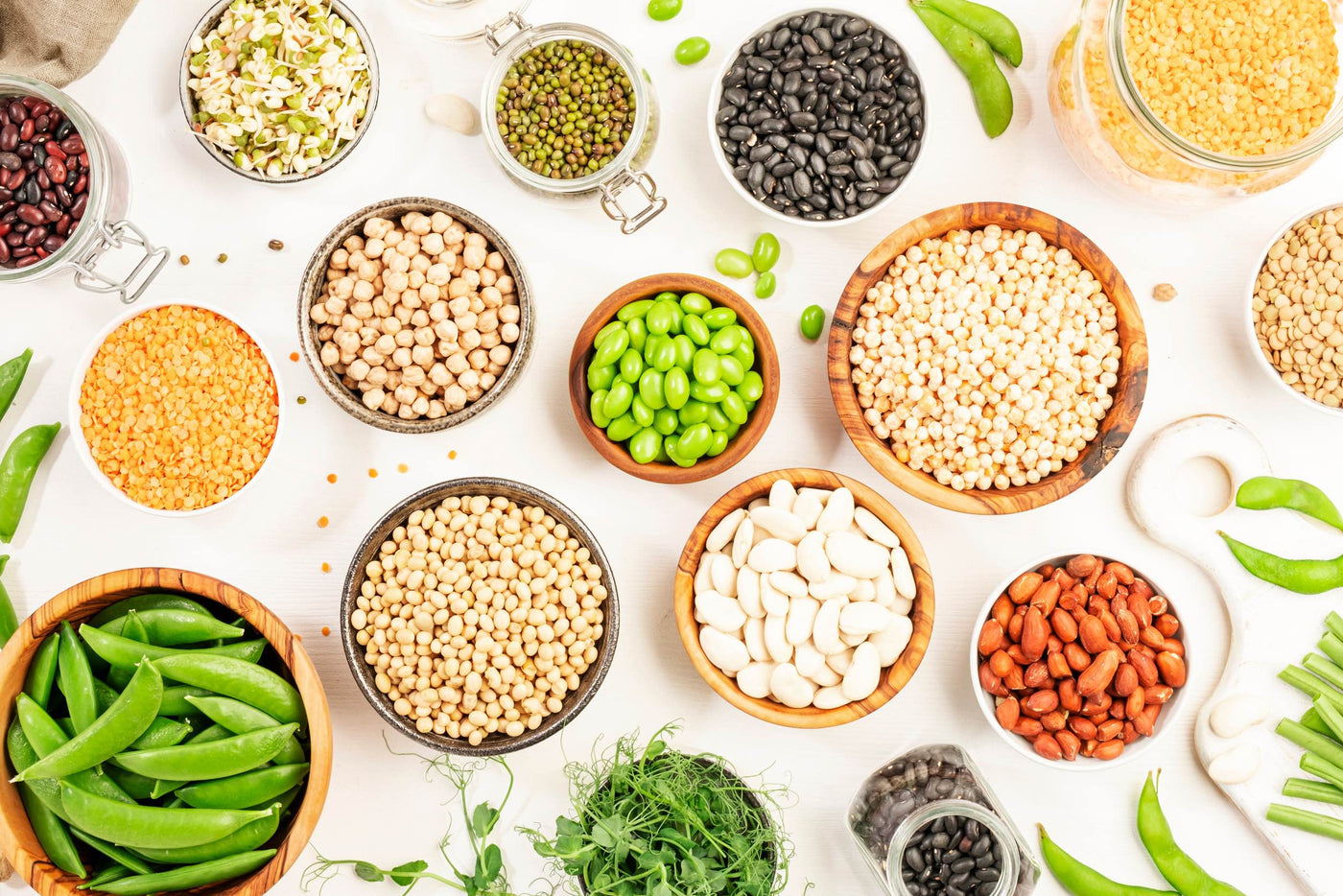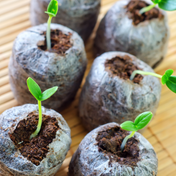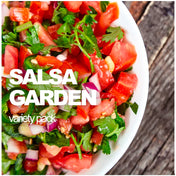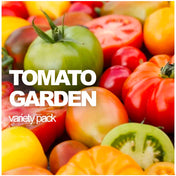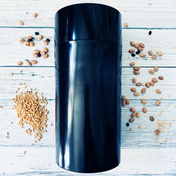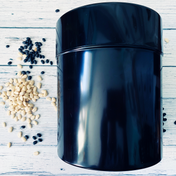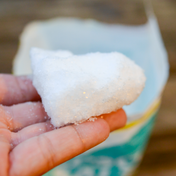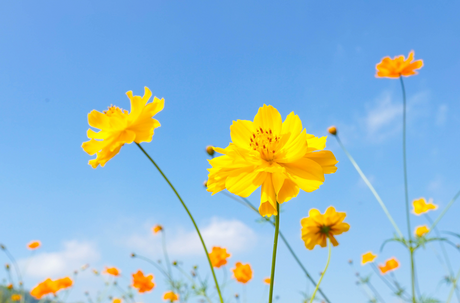Pepper (Hot) - Habanero, Lemon 🔥🔥🔥🔥
From $499 USDUnit price /UnavailableDescription

Yellow like the sun and hot as blazes describes the Lemon Habanero Pepper. If that scares you, there’s a Yellow Banana Pepper and a cup of milk waiting for you in the nursery. Everyone else can pull up a chair to the big kids’ table. This prolific plant produces lots of 2" wrinkled, waxy fruits that ripen from bright green to bright yellow to smoky golden yellow. The fruity fragrance draws you in, the citrusy flavor sits you down, and then 200,000-300,000 Scoville heat units (SHUs) of pure heat blaze across your tongue. Where’d you say that milk is again?
- Very high yields
- Fruity and citrusy
- Hot enough to make a cow go meow
- Good for containers
SEED PLANTING TIPS
- Botanical name: Capsicum chinense
- Pepper length: 1"-2"
- Scoville heat units (SHU): 200,000-300,000/very hot
- Plant support: Tomato cage or stake
- Depth to plant seeds: .25" deep
- Spacing between plants: 18"-24" apart
- Spacing between rows: 24"-36" apart
- Days to germinate (sprout): 10-30 days
- Germination soil temps: 75F-85F
- Soil needs: 5.0-6.0 pH
- Sun needs: Full sun
- Frost hardy: No
- Planting season: Spring, summer
- # of plants per sq. ft.: Appx. 1 plant per sq. ft.
- Days to maturity: 85-105 days
Good companion plants: Basil, Carrot, Cucumber, Eggplant, Okra, Rosemary, Sage, Squash, TomatoAll Peppers ⟐ Hot Peppers 📚 Hot Peppers Grow Guide Corn Salad (Mache - Lamb's Lettuce) - Dutch
From $399 USDUnit price /UnavailableDescription
-
Valerianella locusta (aka Corn Salad) is a small annual plant that is eaten as a leaf vegetable. It has a characteristic nutty flavor, dark green color, and soft texture, and is popularly served as salad greens. //Wikipedia
- Corn Salad has a delicate flavor, similar to a butterhead lettuce. It is quite hardy and requires very little care while remaining practically free of pests & disease. Corn salad is also known for growing vigorously in almost any soil!
- We think Corn Salad tastes best right out of the garden with a light drizzle of olive oil and a squeeze of fresh lemon. Once you try this cold-hardy green, you'll be sure to make it a staple in your fall/winter gardens every year.
-
Day to Maturity | only 40 days
-
Valerianella locusta (aka Corn Salad) is a small annual plant that is eaten as a leaf vegetable. It has a characteristic nutty flavor, dark green color, and soft texture, and is popularly served as salad greens. //Wikipedia
All-in-One Tomato Garden Variety Pack
$3999 USD$4499Unit price /UnavailableDescription
All-in-One Tomato Variety Pack includes an assortment of our 15 most popular tomato seed varieties. Seeds are all individually packaged. Packaged with zip-lock bag system for long-term storage and maximum seed protection.
- Zipper-top closure and bottom fold
- Resealable
Includes all of the following varieties:
1. Beefsteak (Ponderosa Red) (Appx. 15 seeds)
-
The Ponderosa Red Beefsteak Tomato produces meaty, bright red fruit with mild, sweet flavor. This low-acid ribbed slicer has very few seeds, so there’s more flesh to savor. Strong vines support heavy production, so stake well. Eat them any way you can think of.
- 75-80 days to maturity

2. Black Krim (Appx. 15 seeds)
- The Black Krim Tomato is as unusual as it is flavorful. Hailing from the Black Sea region of Russia, this robust tomato ripens to a unique mix of deep brown shoulders atop smoky red bodies with reddish-green flesh. Reliably produces ½-1lb fruits with a rich, slightly salty flavor. Dress up a sandwich or cook up a Khrenovina sauce.
- 75-80 days to maturity

3. Bonny Best (Appx. 15 seeds)
- The Bonny Best Tomato has a century-old reputation as a canning and ketchup tomato due to its small seed core, acidity, and firm texture, but it’s secretly great as a fresh slicer. This high-yielder produces picture-perfect medium, round, bright red fruits with hearty flavor. A great all-around tomato with many flavorful uses.
- 75-80 days to maturity

4. Brandywine Pink (Appx. 15 seeds)
-
The Pink Brandywine Tomato has lightly ribbed shoulders and potato-leaf foliage. Whether that’s the reason no two are alike, only the tomato knows. The vigorous vine takes its time to ripen the 1-2 lb blushing pink fruit with a small seed core. A beautiful slicer with a sweet, tangy flavor to look forward to late in the season.
-
85-90 days to maturity

5. Cherokee Purple (Appx. 10 seeds)
- With deep purple shoulders and a dusky pink body, the Cherokee Purple Tomato is a stunner in the garden. Slice open this beefsteak to reveal red flesh tinged with purple, brown, and green. Low acidity and sweet, slightly smoky flavor has made this a favorite of tomato lovers for more than 130 years. Will this be the year it becomes your favorite?
-
70-90 days to maturity

6. Cherry Chocolate (Appx. 15 seeds)
- The Black Cherry Tomato is a rather mysterious one. But first let us tell you about its well-known attributes. It produces large clusters of small, uniformly round 1" fruits with rich, sweet flavor. The mystery is whether these little gems will ripen to an onyx, mahogany, or amethyst color in your particular growing conditions.
- 75-80 days to maturity

7. Homestead (Appx. 15 seeds)
- On any productive homestead, every member needs to pull its weight, and the Homestead Tomato out-tomatoes every tomato. Sun up to sun down, in high heat and humidity, this workhorse churns out large, red, smooth, sturdy, meaty, juicy slicers. As comfortable in the overalls of a sandwich as it is done up in its Sunday best for the canner. Just a good ol’ heirloom with good old-fashioned tomato flavor.
- 75-80 days to maturity

8. Large Red Cherry (Appx. 15 seeds)
- If we were going to write a short intro about the Large Red Cherry Tomato, we wouldn’t describe them as “cute little things,” decorating your garden like “heavy clusters of small, ruby jewels” that are “bursting with sweet flavor,” and suggest you “mix them with Black Cherry Tomatoes for an ode to a ladybug." No. We would write it in the bullet points, like this:
- Cute little things
- Clusters of small, ruby jewels
- Sweet flavor
- Mix with Black Cherry Tomatoes for an ode to a ladybug 🐞

9. Rio Grande (Appx. 15 seeds)
- The Rio Grande Tomato is a classic plum/paste tomato that gets along with heat, humidity, and drought, but that’s only one of its maravilloso qualities. The plant produces muchos bright red, egg-shaped fruits with a flavor that’s well-balanced between dulce and acidic. Especially bueno for pastes and sauces, but it wouldn’t mind being chopped up into fresh pico de gallo with a little onion, jalapeño, and cilantro.
- 75-80 days to maturity

10. Rutgers (Appx. 15 seeds)
-
The Rutgers Tomato has all the best tomato qualities—medium tomato size, smooth tomato skin, bright red tomato color, slightly flattened tomato shape, old-fashioned tomato flavor, compact tomato plant, reliable tomato production, generous tomato yields, and kind to animals. A tomato you can take home to meet the family.
-
75-80 days to maturity

11. Small Red Cherry (Appx. 15 seeds)
- The Small Red Cherry Tomato produces small red cherry tomatoes. Not Large Red Cherry Tomatoes. Small ones and lots of them. Small, like ½" small. Bursting with flavor
- 70-80 days to maturity

12. Red Pear
- With a history as old as America herself, the Red Pear Tomato has been a delicious tradition in thousands of gardens. Vigorous vines are loaded with hundreds of small, sweet pear-shaped fruits with a nice acidic bite. Early maturity is a bonus for Northern zones with a short growing season. Try roasting or pickling them for your Fourth of July celebration.
- 75-80 days to maturity

13. Yellow Pear (Appx. 15 seeds)
- We don’t say this about a lot of tomatoes, but the Yellow Pear Tomato really should be grown in every garden. We also don’t say this about a lot of tomatoes: It’s prolific. Ripens loads of lemon-yellow, pear-shaped 1"-2" fruits that are delicious straight off the vine. Keep a few empty bags on-hand to fill up and share these sweet, mild flavor bombs with friends and neighbors.
- 75-80 days to maturity

14. Roma (Appx. 15 seeds)
- The Roma Tomato is the quintessential plum/paste tomato. Light on seeds and juice, it has thick fruit walls and dense flesh that holds onto seasonings and spices. Ever so good cooked into a thick sauce or paste, canned, or pureed. Compact plants produce meaty, egg-shaped fruits that are sweet and tangy. Skip the flavorless ones at the grocery store and grow your own Romas this summer.
- 75-85 days to maturity

15. VR Moscow (Appx. 15 seeds)
- The VR Moscow Tomato was created by Utah State University to thrive in vast intermountain regions, and named after Moscow, Idaho. Vigorous vines produce very respectable 1-2 lb. fruits that are a vivid red. This very robust beefsteak slicer with thick walls and juicy flesh offers voluptuous, rich, old-fashioned tomato flavor. A valuable recipe ingredient for canning, pastes, and sauces, and viscerally responsive to salt and pepper.
- 80-90 days to maturity
- From $299 USDUnit price /Unavailable
Description
- Plant produces good yields of egg shaped tomatoes.
- The tomatoes are the size and shape of an egg.
- A firm tomato that keeps well. Does well in poor growing conditions.
SEED PLANTING TIPS
- Botanical name: Solanum lycopersicum
- Growth type: Indeterminate, trellis support, regular pruning
- Tomato size: Small
- Depth to plant seeds: 1/8" deep
- Spacing between plants: 24" apart
- Spacing between rows: 36"-48" apart
- Days to germinate (sprout): 7-14 days
- Germination soil temps: 75F-95F
- Soil needs: 6.0-6.5 pH
- Sun needs: Full sun
- Frost hardy: No
- Planting season: Spring, summer
- # of plants per sq. ft.: Appx. 1 plant per 2 sq. ft.
- Days to maturity: 75-80 days
Click here to view our full Tomato grow guide
Good companion plants: Basil, Borage, Onion, Parsley, Pepper
- Plant produces good yields of egg shaped tomatoes.
Cardoon (Purple Artichoke Thistle)
From $399 USDUnit price /UnavailableDescription
 Cardoon is an artichoke thistle. It has become an extremely important medicinal herb in recent years following the discovery of cynarin.
Cardoon is an artichoke thistle. It has become an extremely important medicinal herb in recent years following the discovery of cynarin.
The cardoon is related to the Globe artichoke.
Cardoons are recognized as a good source of potassium, calcium and iron. Artichoke oil, which is similar to sunflower or safflower oil, can be extracted from the seeds.
Cardoons can be baked, braised or boiled, and it's often a good idea to blanch them for up to 30 minutes before using them. Watch-out! Beware of sneaky thistles that may be lurking on the outer stalks -- (it's best to peel the outside a bit.)Cardoons are excellent fried! Try them simmered in broth, or added to a stew. If you're a cheesemaker, the purple stamens of the cardoon flower can be used to make vegetarian rennet!
See Cardoon Recipes & Growing Tips on our Pinterest Board
Pepper (Hot) - Pretty Purple 🔥🔥🔥🔥
From $499 USDUnit price /UnavailableDescription

An edible ornamental, the Pretty Purple Pepper loves an audience. Compact plants produce an ensemble of 1"-2" tapered fruits that lift their tips in a glorious chorus line of mini rockets, going through several costume changes in green, purple, yellow, orange, and red. The show goes on when you bite into one. With a searing purple heat in tune with the Habaneros and the Scotch Bonnets, you’ll be singing and dancing in your own Broadway musical. Assemble several plants to choreograph a border, or give one the spotlight in a nice container/pot, and let it audition for your next spicy production.The Purple Cayenne Pepper is just as purple and pretty, but with less drama.
- High yields
- Edible ornamental
- Harvest any color
- Good for containers
SEED PLANTING TIPS
- Botanical name: Capsicum annuum
- Pepper length: 1"-2"
- Scoville heat units (SHU): 200,000-350,000/very hot
- Plant support: None - they support each other
- Depth to plant seeds: 1/8" deep
- Spacing between plants: 6"-12" apart
- Spacing between rows: 18"-24" apart
- Days to germinate (sprout): 7-21 days
- Germination soil temps: 75F-85F
- Soil needs: 6.0-7.0 pH
- Sun needs: Full sun
- Frost hardy: No
- Planting season: Spring, summer
- # of plants per sq. ft.: Appx. 2-4 plants per sq. ft.
- Days to maturity: 90-120 days
Good companion plants: Basil, Carrot, Cucumber, Eggplant, Okra, Rosemary, Sage, Squash, Tomato
All Peppers ⟐ Hot Peppers 📚 Hot Peppers Grow Guide - From $399 USDUnit price /Unavailable
Description

- Levisticum officinale. Perennial.
- Plant produces glossy dark green leaves that have a flavor similar to Celery.
- Known for the treatment of digestive problems
- A teaspoon of Lovage seeds, steeped in Brandy, strained and sweetened with sugar is on old remedy for settling an upset stomach
- Plant Height: 80" tall
- Days to Maturity | 85 days
- Levisticum officinale. Perennial.
Spinach - Monstrueux De Viroflay
From $399 USDUnit price /UnavailableDescription
Monstrous Viroflay spinach is a variety of spinach known for its large, dark green leaves and delicious flavor. It is a popular choice among gardeners and spinach enthusiasts due to its impressive size and nutritional value.
This variety of spinach is named after the town of Viroflay in France, where it was first cultivated. It is known for its vigorous growth and ability to produce abundant harvests.
Monstrous Viroflay spinach is rich in vitamins A, C, and K, as well as iron, calcium, and fiber. It is a nutrient-dense leafy green that can be enjoyed in a variety of dishes, including salads, sautés, and smoothies.
One of the key features of Monstrous Viroflay spinach is its size. The leaves can grow up to 10 inches long, making them perfect for salads or as a side dish. The large leaves also make it easier to harvest and prepare the spinach.
When growing Monstrous Viroflay spinach, it is important to provide it with well-drained soil and ample sunlight. This variety thrives in cool weather and can be planted in early spring or late summer for a fall harvest.
Monstrous Viroflay spinach is a versatile and nutritious addition to any garden or kitchen. Its impressive size, delicious taste, and health benefits make it a favorite among spinach lovers.
-
How to Grow | Spinach is very hardy and can tolerate cold — in fact, it thrives in cold weather. Spinach grows really well during winter months in the South. Spinach also grows well in early spring and late summer in the North. These seeds should be planted about four weeks before your area's average date of last frost.
- Days to Maturity | 45 days
-
How to Grow | Spinach is very hardy and can tolerate cold — in fact, it thrives in cold weather. Spinach grows really well during winter months in the South. Spinach also grows well in early spring and late summer in the North. These seeds should be planted about four weeks before your area's average date of last frost.
Tomato - Marglobe Supreme (Indeterminate)
From $299 USDUnit price /UnavailableDescription
The Marglobe Supreme Tomato has been producing reliable yields of marvelous scarlet globes with supreme tomato flavor for more than 100 years. These time-tested juicy slicers are smooth, firm, and stocky with good old-fashioned tomato flavor. Supremely satisfying when eaten fresh, canned, or sun-dried.
- Juicy slicers
- Reliable producer
- Good tomato flavor
- Good fresh or cooked
SEED PLANTING TIPS
- Botanical name: Solanum lycopersicum
- Growth type: Indeterminate, trellis support, regular pruning
- Tomato size: Medium
- Depth to plant seeds: .25" deep
- Spacing between plants: 24" apart
- Spacing between rows: 36"-48" apart
- Days to germinate (sprout): 7-14 days
- Germination soil temps: 75F-95F
- Soil needs: 6.0-6.5 pH
- Sun needs: Full sun
- Frost hardy: No
- Planting season: Spring, summer
- # of plants per sq. ft.: Appx. 1 plant per 2 sq. ft.
- Days to maturity: 70-80 days
Click here to view our full Tomato grow guide
Good companion plants: Basil, Borage, Onion, Parsley, Pepper
- From $399 USDUnit price /Unavailable
Description
Let us tell you about Lettuce Leaf Basil. It’s a lovely Italian basil that grows huge leaves as big as your hand, with a flavor that’s sweeter and less spicy than other basils. Its crinkles hold onto dressing in salads, you need only one leaf for a sandwich or wrap, and you can use the rest as you would any other basil. Save the edible flower spikes to garnish seafood dishes and cocktails.Harvest the leaves and stems from the top part of the plant, and pinch off edible flower buds as they appear, which prevents the leaves from turning bitter, and signals the plant to branch out and grow more leaves, making a bushier plant. The more you harvest, the more it grows!
- Sweet and mild
- Huge 5"-6" leaves
- Grows 1'-2' tall
- Good for containers
- Tons of medicinal benefits!
As a medicinal herb, Basil has been used internally to treat anxiety, colds, colic, cough, depression, diarrhea, fever, flatulence, flu, indigestion, insomnia, intestinal parasites and worms, exhaustion, gastric pain, gonorrhea, lactation problems, migraine headache, nausea, stomach cramps, sore throat, and vomiting, and externally to treat acne, insect bites and stings, loss of smell, skin problems, snake bites.
⚠️ Do not use medicinally while pregnant.
⚠️ Medicinal properties are presented as information only, and are not a recommendation or prescription for use. Consult a medical professional before using any herb medicinally.
As a companion plant, Basil attracts hummingbirds, pollinators, and beneficial insects, and repels asparagus beetles, cabbage moths, cabbage white butterfly, cabbage worms, carrot rust fly, flies, maggots, mice, mosquitoes, spider mites, thrips, and tomato hornworms.
Shop all Basil Seeds Shop Good Companion Plants for Basil 📚 Grow Guide: Basil Health Benefits of Genovese Basil
Basil is a known health tonic for expecting mothers and when mixed with tea it increases lactation in mothers. It is also a nerve tonic and young children are sometimes encouraged to chew on the leaves of basil because it stimulates brain cells and can increase memory.

See Basil Recipes & Growing Tips on our Pinterest Board
Shop all Basil Seeds Shop Good Companion Plants for Basil 📚 Grow Guide: Basil Tomato - Oxheart, Pink (Indeterminate)
From $299 USDUnit price /UnavailableDescription

Valentine’s Day is too early to grow the Pink Oxheart Tomato, but you’ll have all summer to court your sweetheart with these dark pink heart-shaped fruits. Juicy and meaty, this luscious slicer grows to 1-2 lbs. Its mild, sweet flavor is just right for a romantic picnic of tomato sandwiches, pizza and a movie, or marinated tomato tortellini by candlelight.
You may also like: Orange Oxheart Tomatoes ⟐ Yellow Oxheart Tomatoes- High yields
- Low acidity
- Small seed core
- Mild, sweet flavor
SEED PLANTING TIPS
- Botanical name: Solanum lycopersicum
- Growth type: Indeterminate, trellis support, regular pruning
- Tomato size: Large (1-2 lbs.)
- Depth to plant seeds: .25" deep
- Spacing between plants: 24" apart
- Spacing between rows: 36"-48" apart
- Days to germinate (sprout): 7-14 days
- Germination soil temps: 75F-95F
- Soil needs: 6.0-6.5 pH
- Sun needs: Full sun
- Frost hardy: No
- Planting season: Spring, summer
- # of plants per sq. ft.: Appx. 1 plant per 2 sq. ft.
- Days to maturity: 80-90 days
Click here to view our full Tomato grow guide
Good companion plants: Basil, Borage, Onion, Parsley, Pepper
Tomato - Bradley (Indeterminate)
From $299 USDUnit price /UnavailableDescription
The Bradley Tomato is a sweet little pink tomato. By sweet, we mean lightly sweet and slightly acidic. By little, well, that’s just what you say when you describe something darling; it’s a medium-sized fruit. As for pink, it’s a dark pink. To be precise, it’s a lightly sweet and slightly acidic medium-sized dark pink tomato. A reliable producer with good-old fashioned tomato flavor.
- Well-balanced flavor
- Dark pink color
- Reliable producer
- Good fresh or cooked
SEED PLANTING TIPS
- Botanical name: Solanum lycopersicum
- Growth type: Indeterminate, trellis support, regular pruning
- Tomato size: Medium
- Depth to plant seeds: .25" deep
- Spacing between plants: 24" apart
- Spacing between rows: 36"-48" apart
- Days to germinate (sprout): 7-14 days
- Germination soil temps: 75F-95F
- Soil needs: 6.0-6.5 pH
- Sun needs: Full sun
- Frost hardy: No
- Planting season: Spring, summer
- # of plants per sq. ft.: Appx. 1 plant per 2 sq. ft.
- Days to maturity: 75-80 days
Good companion plants: Basil, Borage, Onion, Parsley, Pepper
Pepper (Hot) - Purple Tiger 🔥🔥
From $499 USDUnit price /UnavailableDescription

Exotic and rare, the Purple Tiger Pepper draws you to its lair with foliage in variegated colors of white, green, and purple. Slowly, slowly you’re mesmerized by the 1"-2" tapered fruit that starts off green, creeping to purple with a lighter, rosy striped pattern that ripens fully to red. And then it pounces with a low growl of heat, twice as hot a jalapeño. Stuff with cream cheese for some purple poppers, or pickle a peck of them to sprinkle on nachos.
Hunting for a heat that roars? Try the Chocolate Habanero Pepper.
- High yields
- Variegated foliage and fruit
- Harvest any color
- Good for containers
SEED PLANTING TIPS
- Botanical name: Capsicum annuum
- Pepper length: 1"-2"
- Scoville heat units (SHU): 5,000-9,000/medium
- Plant support: None
- Depth to plant seeds: 1/8" deep
- Spacing between plants: 12"-18" apart
- Spacing between rows: 18"-24" apart
- Days to germinate (sprout): 7-21 days
- Germination soil temps: 75F-85F
- Soil needs: 6.0-7.0 pH
- Sun needs: Full sun
- Frost hardy: No
- Planting season: Spring, summer
- # of plants per sq. ft.: Appx. 1 plant per sq. ft.
- Days to maturity: 90-100 days
Good companion plants: Basil, Carrot, Cucumber, Eggplant, Okra, Rosemary, Sage, Squash, Tomato
All Peppers ⟐ Hot Peppers 📚 Hot Peppers Grow Guide - From $399 USDUnit price /Unavailable
Description

- Crisp & refreshing lettuce variety
- The leaves of this particular lettuce makes it idea for use in gourmet sandwiches, burgers and salads
-
Days to Maturity | 60 days
-
Lettuce Seeds | Lettuce can be grown practically anywhere. For leaf types seed should be sown thinly in rows 1 foot apart. For head, Bibb, and cos types, space rows 18 inches apart.
Click here for complete Lettuce grow guide
- Crisp & refreshing lettuce variety
- From $399 USDUnit price /Unavailable
Description
Licorice Basil is a type of Thai basil with a pleasant, sweet licorice flavor. Beautiful as a fragrant and ornamental accent throughout the garden, and delicious in salads, baked goods, and pasta sauce. It’s also pleasant to look at with deep green leaves that sometimes show a burgundy tinge, plum-colored stems, and lavender flower spikes that make a fun garnish for any salad, dish, or drink.Harvest the leaves and stems from the top part of the plant, and pinch off edible flower buds as they appear, which prevents the leaves from turning bitter, and signals the plant to branch out and grow more leaves, making a bushier plant.
The more you harvest, the more it grows!
- Sweet, pleasant licorice flavor
- Thai basil type
- Edible ornamental
- Good for containers
- Tons of medicinal benefits!
As a medicinal herb, Basil has been used internally to treat anxiety, colds, colic, cough, depression, diarrhea, fever, flatulence, flu, indigestion, insomnia, intestinal parasites and worms, exhaustion, gastric pain, gonorrhea, lactation problems, migraine headache, nausea, stomach cramps, sore throat, and vomiting, and externally to treat acne, insect bites and stings, loss of smell, skin problems, snake bites.
⚠️ Do not use medicinally while pregnant.
⚠️ Medicinal properties are presented as information only, and are not a recommendation or prescription for use. Consult a medical professional before using any herb medicinally.
As a companion plant, it attracts hummingbirds, pollinators, and beneficial insects, and repels asparagus beetles, cabbage moths, cabbage white butterfly, cabbage worms, carrot rust fly, flies, maggots, mice, mosquitoes, spider mites, thrips, and tomato hornworms.
Shop all Basil Seeds Shop Good Companion Plants for Basil 📚 Grow Guide: Basil 
This basil variety produces lovely and flavorful green leaves with purple accents. It has a strong, but enjoyable licorice flavor and can grow up to 24" tall.

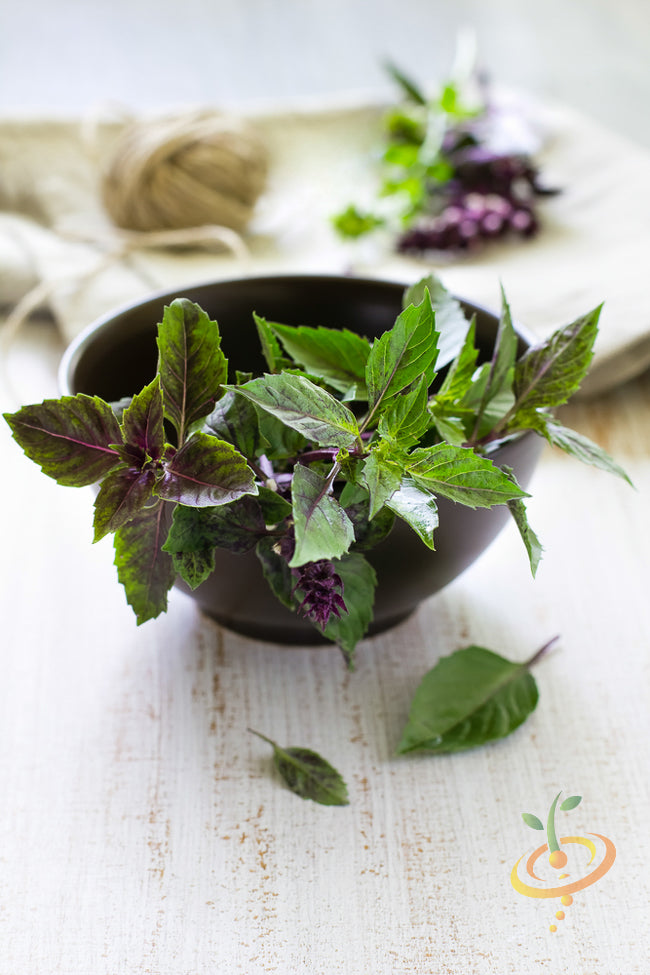
What is Licorice Basil?
This basil is a type of Thai Basil, also known as anise basil. It has strong licorice and anise flavors, qualities and aromatics. It's known to be slightly "lanky" with pointed green leaves with signature purple flowers. Both the leaves and flowers are edible on this plant.
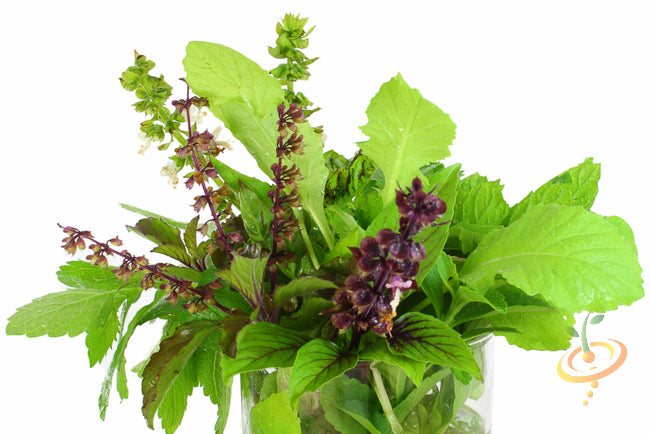
Health Benefits of Licorice Basil
Licorice Basil can be used for treating the common cold, the flu, diabetes, asthma, bronchitis, earaches, headaches, upset stomachs, heart disease, fever, and more. It promotes longevity but something you may not know is that its an excellent mosquito repellent!

Ways to Consume Licorice BasilWhen Licorice Basil leaves are crushed, they burst with intense basil and licorice aromas. Fragrant and floral, the spicy paste is a condiment for multiple dishes. This basil is best when mixed with other ingredients to tame it's powerful one-dimensional notes.

See Basil Recipes & Growing Tips on our Pinterest Board
Shop all Basil Seeds Shop Good Companion Plants for Basil 📚 Grow Guide: Basil - From $399 USDUnit price /Unavailable
Description
Greek Basil is a small-leaf dwarf variety that grows into a tight dome, about 1’ tall and wide. A great one for containers, hanging baskets, and indoor gardens. The bright green, oval leaves and soft stems have hints of clove and anise, and keep their flavor when dried. Use this variety to flavor herb butters and vinaigrettes, and the edible flowers as a garnish or salad green.Harvest the leaves and stems from the top part of the plant, and pinch off edible flower buds as they appear, which prevents the leaves from turning bitter, and signals the plant to branch out and grow more leaves, making a bushier plant.
The more you harvest, the more it grows!
- Basil-clove-anise flavor
- Compact plant
- Good for indoor gardens
- Good for containers
- Tons of medicinal benefits!
As a medicinal herb, Basil has been used internally to treat anxiety, colds, colic, cough, depression, diarrhea, fever, flatulence, flu, indigestion, insomnia, intestinal parasites and worms, exhaustion, gastric pain, gonorrhea, lactation problems, migraine headache, nausea, stomach cramps, sore throat, and vomiting, and externally to treat acne, insect bites and stings, loss of smell, skin problems, snake bites.
⚠️ Do not use medicinally while pregnant.
⚠️ Medicinal properties are presented as information only, and are not a recommendation or prescription for use. Consult a medical professional before using any herb medicinally.
As a companion plant, it attracts hummingbirds, pollinators, and beneficial insects, and repels asparagus beetles, cabbage moths, cabbage white butterfly, cabbage worms, carrot rust fly, flies, maggots, mice, mosquitoes, spider mites, thrips, and tomato hornworms.
Shop all Basil Seeds Shop Good Companion Plants for Basil 📚 Grow Guide: Basil


See Basil Recipes & Growing Tips on our Pinterest Board
Shop all Basil Seeds Shop Good Companion Plants for Basil 📚 Grow Guide: Basil - From $399 USDUnit price /Unavailable
Description
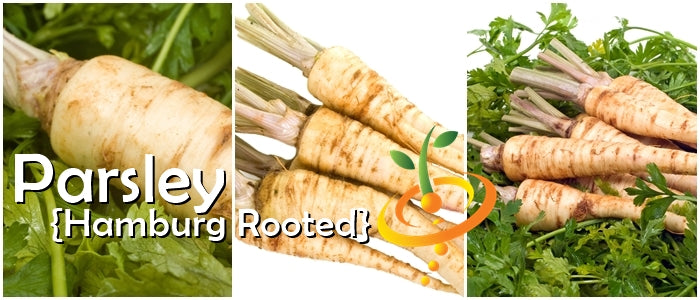
-
A very old heirloom variety dating back to the 1600's
- Hamburg Rooted Parsley is used differently than other parsley plants. It's actually preferred by many European cooks and is typically the main ingredient for many stews
- Hamburg Rooted Parsley is a large edible root with smooth mild parsley flavor
- Very easy to grow
- In Europe root parsley is usually the first choice over parsnips
-
Day to Maturity | 85 days
-
A very old heirloom variety dating back to the 1600's
Corn Salad (Mache - Lamb's Lettuce) - French
From $399 USDUnit price /UnavailableDescription
- Valerianella locusta (aka Corn Salad) is a small annual plant that is eaten as a leaf vegetable. It has a characteristic nutty flavor, dark green color, and soft texture, and is popularly served as salad greens. //Wikipedia
- Corn Salad has a delicate flavor, similar to a butterhead lettuce. It is quite hardy and requires very little care while remaining practically free of pests & disease. Corn salad is also known for growing vigorously in almost any soil!
- We think Corn Salad tastes best right out of the garden with a light drizzle of olive oil and a squeeze of fresh lemon. Once you try this cold-hardy green, you'll be sure to make it a staple in your fall/winter gardens every year.
-
Day to Maturity | only 40 days
Pepper (Hot) - Hungarian Hot Wax 🔥
From $399 USDUnit price /UnavailableDescription

Zippy and snappy, the Hungarian Hot Wax Pepper offers a little sweet and a little heat, producing loads of peppers earlier than other varieties. Long 6" tapered fruit ripens from green to creamy yellow, which is when it’s just getting zippy. If you leave it be, it will keep going to orange and then red, increasing the heat with each color change. Thin-skinned, meaty, and crunchy. Try pickling in apple cider vinegar, frying up with onions to top an omelet, or stuffing with prosciutto and provolone.- Very high yields
- Meaty and crunchy
- Early producer
- Good for a short growing season
SEED PLANTING TIPS
- Botanical name: Capsicum annuum
- Pepper length: 4"-6"
- Scoville heat units (SHU): 2,000-10,000/mild to medium
- Plant support: Tomato cage or stake
- Depth to plant seeds: .25" deep
- Spacing between plants: 18"-24" apart
- Spacing between rows: 24"-36" apart
- Days to germinate (sprout): 7-21 days
- Germination soil temps: 75F-85F
- Soil needs: 6.0-7.0 pH
- Sun needs: Full sun
- Frost hardy: No
- Planting season: Spring, summer
- # of plants per sq. ft.: Appx. 1 plant per sq. ft.
- Days to maturity: 65-75 days
Good companion plants: Basil, Carrot, Cucumber, Eggplant, Okra, Rosemary, Sage, Squash, Tomato
All Peppers ⟐ Hot Peppers 📚 Hot Peppers Grow Guide - From $399 USDUnit price /Unavailable
Description
What happens when you remove the color from a pepper? The White Cloud Pepper is what happens. A lovely ivory hue, inside and out, glossy and pearly and sometimes tinged with purple. Like the clouds in the sky, they vary in shape and size from small to medium. Its bell pepper nature can’t quite be tamed, however, so the fruit turns green and then bright orange or red when it matures. The flavor endures as well. Sweet and mild with no heat and a definite crunch. Now, what happens when a gardener grows that white sweet pepper?- High yields
- Crunchy and sweet
- Harvest any color
- Good fresh and cooked
- Grows well in containers and tight spaces
SEED PLANTING TIPS
- Botanical name: Capsicum annuum
- Pepper size: Small-to-Medium/2"-5"
- Plant support: Tomato cage or stake
- Depth to plant seeds: .25" deep
- Spacing between plants: 18"-24" apart
- Spacing between rows: 24"-36" apart
- Days to germinate (sprout): 7-21 days
- Germination soil temps: 75F-85F
- Soil needs: 6.0-7.0 pH
- Sun needs: Full sun
- Frost hardy: No
- Planting season: Spring, summer
- # of plants per sq. ft.: Appx. 1 plant per 2 sq. ft.
- Days to maturity: 70-75 days
Good companion plants: Basil, Carrot, Cucumber, Eggplant, Okra, Rosemary, Sage, Squash, Tomato
All Peppers ⟐ Sweet Peppers 📚 Sweet Peppers Grow Guide Nasturtium - Glorious Gleam Flowers
From $399 USDUnit price /UnavailableDescription
Semi-trailing plant with fragrant flowers that come in a variety of shades and colors.
Depth to Plant
Spacing Between Plants
Days to Germinate (Sprout)
Germination
Soil TempBest Season to Plant_________
Sun
RequirementSoil
RequirementsGood Plant Companions
Harvest Instructions
1/2" Deep 12" Apart 7-10 Days Approx. 70 degrees F. Early Spring Full Sun Well drained and sandy Roses and most vegetables Harvest blooms regularly to encourage new growth. 
How to Grow & Harvest Nasturtiums When to Plant
Nasturtiums should be planted in the spring for a "summer show" once soil temperatures have reached around 70 degrees F.
- Nasturtium flowers are one of the most popular edible flowers grown in home gardens. The petals have a slight peppery taste, and the seeds and leaves are also edible! You can even use the seeds as an alternative to capers.
- Not only are the flowers pretty, Nasturtiums are great companion plants! They are also known to deter aphids, whiteflies, cucumber beetles & more. Learn more >
- Nasturtiums should be planted in the spring for a "summer show". Plant in full sun, and in sandy, well drained soil. Generally, the poorer the soil quality, the more flowers the plant will produce! Deadhead your plants regularly to encourage new blooms, all season long. These flowers will self-seed resulting in more flowers for years to come!
- These are PERFECT for beginner gardeners! These annuals are very easy to grow from seed and can be grown just about anywhere, even places that are susceptible to drought.
- The bright flower petals will liven up any garden, with very little effort! They are also GREAT for planting in hanging baskets or containers.


How to Plant
Plant in full sun, and in sandy, well drained soil. Generally, the poorer the soil quality, the more flowers the plant will produce! These seeds require darkness to germinate and will do best with planted a half of an inch deep, spaced at least 12" apart. Plants should appear within 7-10 days. These annuals are very easy to grow from seed and can be grown just about anywhere, even places that are susceptible to drought.When to Harvest
Deadhead your plants regularly to encourage new blooms, all season long. These flowers will self-seed resulting in more flowers for years to come!- From $399 USDUnit price /Unavailable
Description

- Beautiful bright lime green lettuce leaves
- This is the green alternative to Lollo Rossa
- Compact and curly with amazing flavor
- Extremely popular amongst gourmet chefs and restaurants
- Easy to grow and does not require a lot of space
-
Days to Maturity | 50 days
-
Lettuce Seeds | Lettuce can be grown practically anywhere. For leaf types seed should be sown thinly in rows 1 foot apart. For head, Bibb, and cos types, space rows 18 inches apart.
Click here for complete Lettuce grow guide
- Beautiful bright lime green lettuce leaves
Pepper (Hot) - Jalapeño, Yellow (Caloro) 🔥
From $399 USDUnit price /UnavailableDescription

The Caloro Pepper is a gilded name for the Yellow Jalapeño Pepper. If you grow these, it will help to have two things: lots of friends and lots of bags, because you are going to have lots of these hot peppers to share. This prolific plant produces 2"-3" tapered fruits continuously, all summer long, maturing from yellow to orange to red. Continuously. Yellow, orange, red. All summer long. Yellow, orange, red. Thick-skinned, sweet, and crunchy with a heat that’s milder than a Green Jalapeño, but still quite spicy. Yellow, orange, red. Continuously, all summer long.
- Very high yields
- Ever-bearing
- Hot jalapeño flavor
- Harvest any color
SEED PLANTING TIPS
- Botanical name: Capsicum annuum
- Pepper length: 2"-3"
- Scoville heat units (SHU): 1,000-5,000/mild to medium
- Plant support: Tomato cage or stake
- Depth to plant seeds: .25" deep
- Spacing between plants: 18"-24" apart
- Spacing between rows: 24"-36" apart
- Days to germinate (sprout): 7-21 days
- Germination soil temps: 75F-85F
- Soil needs: 6.0-7.0 pH
- Sun needs: Full sun
- Frost hardy: No
- Planting season: Spring, summer
- # of plants per sq. ft.: Appx. 1 plant per sq. ft.
- Days to maturity: 75-85 days
Good companion plants: Basil, Carrot, Cucumber, Eggplant, Okra, Rosemary, Sage, Squash, Tomato
All Peppers ⟐ Hot Peppers 📚 Hot Peppers Grow Guide Tomato - Marion (Indeterminate)
From $299 USDUnit price /UnavailableDescription
The Marion Tomato is the perfect tomato for Southern gardens—tolerant of heat and humidity, resistant to cracking and disease, producing gobs of scarlet globes that ripen mid-season, and with just enough sweetness and acidity to know you’re eating the perfect tomato. A great-tasting and versatile fruit for sauce and paste or salt and pepper.
- Heat tolerant
- Early producer
- High yields
- Good for Southern gardens
SEED PLANTING TIPS
- Botanical name: Solanum lycopersicum
- Growth type: Indeterminate, trellis support, regular pruning
- Tomato size: Medium
- Depth to plant seeds: .25" deep
- Spacing between plants: 24" apart
- Spacing between rows: 36"-48" apart
- Days to germinate (sprout): 7-14 days
- Germination soil temps: 75F-95F
- Soil needs: 6.0-6.5 pH
- Sun needs: Full sun
- Frost hardy: No
- Planting season: Spring, summer
- # of plants per sq. ft.: Appx. 1 plant per 2 sq. ft.
- Days to maturity: 75-80 days
Click here to view our full Tomato grow guide
Good companion plants: Basil, Borage, Onion, Parsley, Pepper
Nasturtium - Peach Melba Flowers
From $399 USDUnit price /UnavailableDescription
This variety produces cream-like, yellow petals with splashes of darker red in the center. Compact in size with deep blue/green foliage.
- Nasturtium flowers are one of the most popular edible flowers grown in home gardens. The petals have a slight peppery taste, and the seeds and leaves are also edible! You can even use the seeds as an alternative to capers.
- Not only are the flowers pretty, Nasturtiums are great companion plants! They are also known to deter aphids, whiteflies, cucumber beetles & more. Learn more >
- Nasturtiums should be planted in the spring for a "summer show". Plant in full sun, and in sandy, well drained soil. Generally, the poorer the soil quality, the more flowers the plant will produce! Deadhead your plants regularly to encourage new blooms, all season long. These flowers will self-seed resulting in more flowers for years to come!
- These are PERFECT for beginner gardeners! These annuals are very easy to grow from seed and can be grown just about anywhere, even places that are susceptible to drought.
- The bright flower petals will liven up any garden, with very little effort! They are also GREAT for planting in hanging baskets or containers.
- From $399 USDUnit price /Unavailable
Description

The Tepin Pepper is a tiny treat with a lot of heat. Compact, vigorous plants produce lots of juicy, pea-sized fruits that are hot enough to make a cookie crumble. This is a perennial bush in warmer locations, so if it survives the winter, it will grow back bigger and more productive. Use it to heat up anything from honey to menudo to ice cream.
- High yields
- Perennial
- Slow to germinate
- Good for containers
SEED PLANTING TIPS
- Botanical name: Capsicum annuum
- Pepper size: 1/4"-1/2"
- Scoville heat units (SHU): 50,000-100,000/hot
- Plant support: Tomato cage or stake
- Depth to plant seeds: .25" deep
- Spacing between plants: 24"-36" apart
- Spacing between rows: 36"-48" apart
- Days to germinate (sprout): 28-70 days
- Germination soil temps: 75F-85F
- Soil needs: 6.0-7.0 pH
- Sun needs: Full sun
- Frost hardy: Yes
- Planting season: Spring, summer
- # of plants per sq. ft.: Appx. 1 plant per 2 sq. ft.
- Days to maturity: 120-200 days
Good companion plants: Basil, Carrot, Cucumber, Eggplant, Okra, Rosemary, Sage, Squash, Tomato
- These Tepin pepper seeds will produces tons of of ¼" pea-sized hot peppers.
- Extremely hot. Handle with care
- They will turn from green -> to orange -> to red as they continue to mature
- Some claim this variety to be one of the Hottest Pepper in the World
- It can sometimes take the seeds about 4-10 weeks to germinate - so patience is a virtue with these babies but definitely worth it in the end
- Plant height is approximately 2' - 3'
- Highest germination rates occur during the warmer months - around at 80 F or higher
- Grows extremely well in small to medium sized containers
- If you like hot peppers then this variety is a definite must have
All Peppers ⟐ Hot Peppers 📚 Hot Peppers Grow Guide All-in-One Pepper Garden Variety Pack
$3999 USDUnit price /UnavailableDescription
All-in-One Hot & Sweet Pepper Variety Pack includes an assortment of our most popular varieties. Seeds are all individually packaged. Packaged with zip-lock bag system for long-term storage and maximum seed protection.Includes all of the following varieties:
1. Anaheim Chili
- Appx. 10 seeds
- The Anaheim Chili Pepper is really quite mild. About one kick up from a bell pepper. This California native is called Hatch when grown in New Mexico and Seco del Norte when dried. Loads of long 6"-10" tapered peppers ripen from grassy green to forest to smoky red. Thick-skinned and fleshy, tangy and sweet, tasty when fresh or cooked into meat. Try chiles rellenos or corn chowder, or make it Seco and grind into powder.
2. Ancho Grande
- Appx. 10 seeds
- The Ancho Grande Pepper is named for its size—ancho is wide, grande is big. That’s when it’s dark red. While it’s still dark green, it’s called Poblano, which is named for a town in Mexico. And when it matures fully to dark brown, the name is Mulato. Vigorous, leafy plants produce grande amounts of tapered heart-shaped 4"-8" fruit with a mellow, smoky flavor and a little bit of heat. This fleshy, thick-skinned pepper is traditionally used for chiles rellenos and mole sauce, but you can probably think of a few more uses while you’re studying for the quiz about its name.
3. Pretty Purpl5
- Appx. 10 seeds
- The Big Jim Pepper is the world’s largest pepper variety, with a fruit that can grow to 14" or longer. Typically in the 6"-10" range, these wide, tapered summer icicles grow on compact plants and ripen from lime green to smoky crimson. Sweet and flavorful with a pleasurable crackle of heat. When roasted or grilled, the thick skin slips off easily, leaving tender, juicy, meaty flesh. If you do grow a Jim that needs a tape measure, fill one full of ham and havarti or crab and cream cheese, and feed your entire family plus a neighbor kid.
4. California Wonder Bell Pepper
- Appx. 10 seeds
- The California Wonder Pepper is so easy-going, it doesn’t mind if you call it Cal Wonder. Sturdy plants produce lots of smooth, blocky 3"-4" fruits with mostly four lobes and thick skin that ripen from peace, man green ✌️ to groovy orange to right-on red. Juicy and crunchy with sweet, mild flavor, and no heat. Eat fresh or stuff with chicken and avocado for a wonderful easy lunch.
5. Cayenne Long Thin Red
- Appx. 10 seeds
- The Red Cayenne Pepper will put a hop, a skip, and a kick in your step. Slender, glossy 5"-6" fruits grow abundantly on strong plants, bounding through all the primary colors as it matures from green to yellow to orange to red. Primarily used as a dried spice, but can be used fresh to rev up a salsa or to make pickling brine howl.
6. Caloro, Yellow Jalapeno
- Appx. 10 seeds
- The Caloro Pepper is a gilded name for the Yellow Jalapeño Pepper. If you grow these, it will help to have two things: lots of friends and lots of bags, because you are going to have lots of these hot peppers to share. This prolific plant produces 2"-3" tapered fruits continuously, all summer long, maturing from yellow to orange to red. Continuously. Yellow, orange, red. All summer long. Yellow, orange, red. Thick-skinned, sweet, and crunchy with a heat that’s milder than a Green Jalapeño, but still quite spicy. Yellow, orange, red. Continuously, all summer long.
7. Classic Green Jalapeno
- Appx. 10 seeds
- We’re not sure if the Jalapeño Pepper knows it, but this stocky little spark plug is one of the most famous and popular hot peppers in the world. At 7,500 SHUs, it sits at the lower end of the Scoville heat scale, which is hot enough to ignite your tongue, but not so hot you won’t take another bite. Prolific yields ensure a steady harvest of 3" glossy fruits that ripen from dark green to fiery red. In some countries, if it’s not illegal to make salsa with any other pepper, it’s at least frowned upon. Best not chance it.
8. Habenero - Red Caribbean
- The sweet, citrusy flavor, tropical fragrance, and lush green foliage of the Red Caribbean Habanero will remind you of a beach vacation. And so will the searing heat! Produces loads of small 1"-2" wrinkled fruits that twinkle in colors ranging from key lime green to sunrise yellow to sunset orange to sunburn red. Use it to make some haba-haba salsa, broiled halibut with charred pepper cream sauce, or spicy pineapple ice cream.
9. Banana
- Appx. 10 seeds
- Yellow, yellow, bo bellow, banana fana fo fellow…. The Yellow Banana Pepper is one of the mildest and most popular sweet peppers in America. When young, it is pale yellow, crunchy, sweet, and me my mo mellow enough for a youngster to eat. As it ripens from orange to red, it becomes softer and sweeter. Flavorful at any stage of growth, so pick one when you want one. Especially good pickled, but save a few to stuff or stir fry. Yell-ow!
10. Red Hot Cherry
- Appx. 15 seeds
- A Red Cherry type variety that grows into a bushy plant up to 3 feet tall. Higher heat levels than other Hot Cherry peppers. Has a nice robust flavor. Very easy to grow. Pods ripen to a Cherry Red color and get up to over 1 inch in diameter.
11. Santa Fe Grande
- Appx. 10 seeds
- The Santa Fe Grande Pepper is heat-tolerant, prolific, and cheerful. Produces a fiesta of 2"-4" waxy, tapered peppers that ripen through the rich, vibrant colors of the Southwest, from pale green to yellow to orange to red, with sweet, mild flavor and mild heat. So mild, it’s also called Chile Guero, which translates to “blonde chili,” but you might bite into a spicier one here and there. Grill them with onions for a festive topping for chicken or beef, or use as the colorful main ingredient in salsa or a pickle jar.
12. Serrano Tampiqueno
- Appx. 35 seeds
- The Serrano Tampiqueño Pepper “from the mountains” of Mexico opens up new vistas of heat and flavor. The prolific plant tolerates heat and drought, pushing out loads of 2"-3" cylindrical fruits with colors that range from from grassy green to fizzy orange to berry red, and are spicy at every mesa. Use to add flavor, heat, and syllables to pizza tampiqueño, salsa tampiqueño, steak tampiqueño, or pickles tampiqueño, or dry them and tampi into a queño.
13. Hungarian Wax
- Appx. 10 seeds
- Zippy and snappy, the Hungarian Hot Wax Pepper offers a little sweet and a little heat, producing loads of peppers earlier than other varieties. Long 6" tapered fruit ripens from green to creamy yellow, which is when it’s just getting zippy. If you leave it be, it will keep going to orange and then red, increasing the heat with each color change. Thin-skinned, meaty, and crunchy. Try pickling in apple cider vinegar, frying up with onions to top an omelet, or stuffing with prosciutto and provolone.
14. Chocolate Bell Pepper
- Appx. 10 seeds
- The Chocolate Bell Pepper is a fun one to grow. While the skin is maturing from green to brown, the inside is ripening from green to red, so you’re in for a surprise color combo with each one you snip off the vine. Crunchy and sweet with no heat. Ripens early, too.
All-in-One Lettuce & Leafy Greens Variety Pack
$3999 USDUnit price /UnavailableDescription
All-in-One Lettuce & Greens Variety Pack includes an assortment of our 15 most popular varieties. Seed are all individually packaged. Packaged with zip-lock Mylar bag system for long-term storage and maximum seed protection. Includes all of the following 15 varieties:
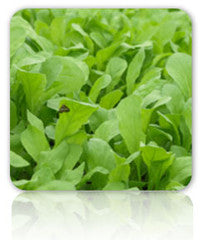
1. Arugula - Classic Roquette (Appx. 150 seeds)
- Arugula can usually be harvested as early as 30-40 days after planting. The leaves of the Arugula plant add a tangy/peppery flavor to any meal. This Arugula variety is an easy-to-grow green. Plant in the spring and again in the fall. Arugula is one of the easiest leafy greens you can grow.
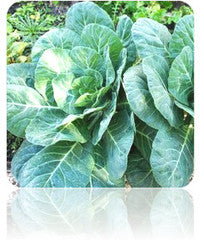
2. Collard - Traditional Georgia Southern (Appx. 50 seeds)
- This is the traditional Collard Green variety popularly grown in the south. Produces large yields of dark blue-green cabbage-like leaves Tolerates heat, humidity, and poor soil conditions.
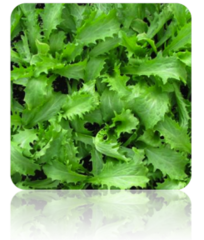
3. Endive - Green Curled (Appx. 100 seeds)
- Endive is a healthy and delicious leafy green. The Green Curled Endive plant produces dark green curly leaves with large tender crisp ribs. Excellent salads and sandwiches. Also good boiled or steamed Extremely easy to grow Endive is rich in many vitamins and minerals, especially in folate and vitamins A and K, and is high in fiber.

4. Kale - Blue Curled Scotch (Appx. 50 seeds)
- The Blue Curled Scotch is an early Kale variety which will produce tasty greens! Excellent in salads or steamed. The blue-green leaves are finely curled and reach up to 12-15" tall! Can handle the cold extremely well. One of the best frost resistant kale varieties available.

5. Kale - Red Russian (Appx. 50 seeds)
- Stems are purple with deep gray-green leaves. The plants mature medium-tall and leaves are tender compared to other kale varieties. Ideal for salads and light cooking. This variety is excellent producer in cooler growing seasons.

6. Lettuce - All Year Round (Appx. 200 seeds)
- As its name suggests, this is a lettuce that can be gown throughout the year. In even some of the the coldest areas across the country, this variety can be grown with some protection with a cloche or cold frame in the cooler months.

7. Lettuce - Gourmet/Mesclun Mix (Appx. 200 seeds)
-
A mixture of favorite lettuce seed varieties from across the spectrum of lettuce types. Plant heavy and start harvest early for young for baby greens then allow some to grow on for plenty of variety for salads. A great way to get a lot out of little space. Perfect for container gardening.

8. Lettuce - Iceberg (Appx. 200 seeds)
- A classic lettuce variety. Iceberg lettuce is most often grown as a leaf vegetable. Mild in flavor, it has been described over the centuries as a cooling counterbalance to other ingredients in a salad. Perfect for burgers and other culinary creations.

9. Lettuce - Classic "Paris Island Cos" (Appx. 135 seeds)
- Large, upright, full-bodied heads with dark-green, slightly savoyed leaves that are mild and sweet. Plant reaches about 10 inches tall. Midribs are crunchy and juicy. Because of their higher chlorophyll content, romaine lettuces are among the most nutritious of all lettuces. Excellent performer in the inter-mountain region. Mosaic tolerant.
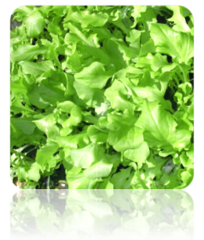
10. Lettuce - Salad Bowl, Green (Appx. 150 seeds)
- The Green Salad Bowl Mix is a really easy-to-grow lettuce variety. Extremely flavorful green leafs. Continues to grow as picked. As outer leaves are picked, inner leaves keep growing. Excellent addition for salads and garnishes

11. Lettuce - Salad Bowl, Red (Appx. 150 seeds)
- The Red Salad Bowl Mix is a really easy-to-grow lettuce variety. Extremely flavorful red leafs. Continues to grow as picked. As outer leaves are picked, inner leaves keep growing. Excellent addition for salads and garnishes.

12. Lettuce - Tom Thumb (Appx. 180 seeds)
- The tom thumb lettuce produces a small, round head with delicate yet delicious leaves. This variety can be planted close together. Ideal for small spaces. Grows well in containers on a patio or windowsill.

13. Mustard - Mizuna (Appx. 50 seeds)
- The Mizuna mustard is a vigorous grower, which produces numerous stalks bearing dark green, deeply cut and fringed leaves. They have a fresh, crisp taste and can be used on their own or cooked with meat. This mustard variety is highly resistant to cold and grows well during the winter months.

14. Mustard - Tendergreen (Appx. 50 seeds)
- A traditional Southern favorite. Plant produces good yields of green mustard leaves. Excellent flavor. Makes a great garnish to any dish. Easy to grow.
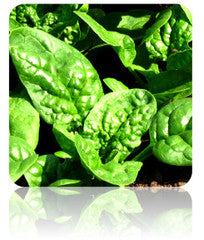
15. Spinach - Bloomsdale (Appx. 70 seeds)
- Bloomsdale Spinach will produce heavy, glossy, dark green leaves. Excellent flavor. Extremely easy to grow. Large, curly dark green leaves. Nice sweet taste.
Sprouts/Microgreens - Beet, Dark Red
From $499 USDUnit price /UnavailableDescription
These Dark Red Beets grow into gorgeous, tender sprouts with deep red shoots and delicate green leaves. An amazing earthy flavor rounds out this extremely rewarding micro-green.
Beets can be the more difficult sprout to grow… but well worth it! It's the prettiest sprout there is (flame red) and can make any plate look and taste even better.
Beets like warm air 75 - 78 degree temperature, humidity 80 - 86%, water temperature 70 degrees) and low light in the room for the first 3 days. The outer surface of a beet seed is like a sponge and can absorb a great amount of water. Please read these instructions carefully:
Proper way to sprout Beet seed:
- Put beet seed in a bucket/tub/container
- Let the seeds soak in warm (not boiling and not cold) water for approx. 8 hours. Stir well in about 4 hours.
- Put in colander and Rinse with lukewarm water until the water that comes off is no longer brown.
⚠️ This is important, as red beet has the above water soluble anti-sprouting components (slime) on its hulls. This is a protection: otherwise, in nature, red beet would sprout in an environment that is not humid enough. Clever seed, isn’t it? - Set aside in a warm room. Give NO WATER and it will sprout in approx. 24-48 hrs.
- Then, water as you would any of your other sprouts & micro-greens
Happy planting!
Tomato - Calypso (Indeterminate)
From $299 USDUnit price /UnavailableDescription
The Calypso Tomato is often referred to as a “common salad tomato". Calypso is tolerant of heat and humidity, and great for Southern gardens.
- Common tomato flavor
- Common tomato color
- Heat tolerant
- Great for Southern gardens
SEED PLANTING TIPS
- Botanical name: Solanum lycopersicum
- Growth type: Indeterminate, trellis support, regular pruning
- Tomato size: Medium
- Depth to plant seeds: .25" deep
- Spacing between plants: 24" apart
- Spacing between rows: 36"-48" apart
- Days to germinate (sprout): 7-14 days
- Germination soil temps: 75F-95F
- Soil needs: 6.0-6.5 pH
- Sun needs: Full sun
- Frost hardy: No
- Planting season: Spring, summer
- # of plants per sq. ft.: Appx. 1 plant per 2 sq. ft.
- Days to maturity: 75-80 days
Good companion plants: Basil, Borage, Onion, Parsley, Pepper
Tomato - Big Rainbow (Indeterminate)
From $299 USDUnit price /UnavailableDescription
The Big Rainbow Tomato is a popular ribbed beefsteak variety that produces 1-2 lb fruits. A favorite among gardeners for its marbled palette of orange, red, and yellow skin coloring that continues through to the flesh. Taming all that wildness is a little pot of gold flavor that is well-balanced between acidic and sweet. Heavy producer, so stake well.
- High yields
- Extra large fruit
- Well-balanced flavor
- Hearty slicer
SEED PLANTING TIPS
- Botanical name: Solanum lycopersicum
- Growth type: Indeterminate, trellis support, regular pruning
- Tomato size: Large (1-2 lbs.)
- Depth to plant seeds: .25" deep
- Spacing between plants: 24"-36" apart
- Spacing between rows: 36"-48" apart
- Days to germinate (sprout): 7-14 days
- Germination soil temps: 75F-95F
- Soil needs: 6.0-6.5 pH
- Sun needs: Full sun
- Frost hardy: No
- Planting season: Spring, summer
- # of plants per sq. ft.: Appx. 1 plant per 3 sq. ft.
- Days to maturity: 85-95 days
Click here to view our full Tomato grow guide
Good companion plants: Basil, Borage, Onion, Parsley, Pepper
Nasturtium - Tall Trailing Mix Flowers
From $399 USDUnit price /UnavailableDescription
This fast-growing, vine-like or "trailing" plant can easily reach 10 feet in length by the end of the growing season! Perfect for growing along fences, or above retaining walls. It boasts colorful flowers in many shades of yellow, orange and even occasionally red.
- Nasturtium flowers are one of the most popular edible flowers grown in home gardens. The petals have a slight peppery taste, and the seeds and leaves are also edible! You can even use the seeds as an alternative to capers.
- Not only are the flowers pretty, Nasturtiums are great companion plants! They are also known to deter aphids, whiteflies, cucumber beetles & more. Learn more >
- Nasturtiums should be planted in the spring for a "summer show". Plant in full sun, and in sandy, well drained soil. Generally, the poorer the soil quality, the more flowers the plant will produce! Deadhead your plants regularly to encourage new blooms, all season long. These flowers will self-seed resulting in more flowers for years to come!
- These are PERFECT for beginner gardeners! These annuals are very easy to grow from seed and can be grown just about anywhere, even places that are susceptible to drought.
- The bright flower petals will liven up any garden, with very little effort! They are also GREAT for planting in hanging baskets or containers.
- From $299 USDUnit price /Unavailable
Description

White Detroit beets are a unique variety prized for their clean, ivory-colored roots and mild, sweet flavor. Ideal for garden cultivation, they develop smooth, tender beets that retain their creamy color after cooking. These beets thrive in well-drained soil with consistent moisture and moderate temperatures, making them suitable for spring and fall planting. Their reliable growth and distinctive appearance add both visual interest and nutritional value to any garden or kitchen. White Detroit beets are an excellent choice for growers seeking a versatile and attractive root vegetable. Days to Maturity | 55-60 days
Shop all Beet Seeds 📚 Beets Grow Guide Sprouts/Microgreens - Fenugreek
From $999 USDUnit price /UnavailableDescription
- From $399 USDUnit price /Unavailable
Description

- Beautiful tight green crinkled lettuce leaves
- Curly leaves with really nice texture and color
- Extremely popular amongst gourmet chefs and restaurants
- Easy to grow and does not require a lot of space
-
Days to Maturity | 50 days
-
Lettuce Seeds | Lettuce can be grown practically anywhere. For leaf types seed should be sown thinly in rows 1 foot apart. For head, Bibb, and cos types, space rows 18 inches apart.
Click here for complete Lettuce grow guide
- Beautiful tight green crinkled lettuce leaves
Tomato - Sub Arctic Plenty (Early) (Determinate)
From $299 USDUnit price /UnavailableDescription
The Sub Arctic Plenty (Early) Tomato is trying to tell you something: It produces a lot of fruits very quickly (45 days!), and really likes cooler temps. It would also like you to know that you can quickly (45 days!) grow the plants closer together without a stake or cage, or in a container or hanging basket. One more thing: It doesn’t sacrifice flavor or texture by ripening so many fruits so quickly (45 days!). You’ll harvest clusters of robust, red, juicy, tart, smallish medium-sized fruits in no time (45 days!). Plenty of them.
- Very high yields
- Very quick production—45 days!
- Good for containers
- Good for an early Southern or short Northern growing season
SEED PLANTING TIPS
- Botanical name: Solanum lycopersicum
- Growth type: Determinate, tomato cage support, no pruning
- Tomato size: Medium
- Depth to plant seeds: .25" deep
- Spacing between plants: 12"-24" apart
- Spacing between rows: 36"-48" apart
- Days to germinate (sprout): 7-14 days
- Germination soil temps: 75F-85F
- Soil needs: 6.0-6.5 pH
- Sun needs: Full sun
- Frost hardy: No
- Planting season: Spring, summer
- # of plants per sq. ft.: Appx. 1 plant per sq. ft.
- Days to maturity: 45-60 days
Click here to view our full Tomato grow guide
Good companion plants: Basil, Borage, Onion, Parsley, Pepper
Nasturtium - Whirlybird Flowers
From $399 USDUnit price /UnavailableDescription
This variety produces jewel-toned flowers, dark green foliage, maximum color! These flowers stand straight and will come in shades of red, orange, cream and gold.
- Nasturtium flowers are one of the most popular edible flowers grown in home gardens. The petals have a slight peppery taste, and the seeds and leaves are also edible! You can even use the seeds as an alternative to capers.
- Not only are the flowers pretty, Nasturtiums are great companion plants! They are also known to deter aphids, whiteflies, cucumber beetles & more. Learn more >
- Nasturtiums should be planted in the spring for a "summer show". Plant in full sun, and in sandy, well drained soil. Generally, the poorer the soil quality, the more flowers the plant will produce! Deadhead your plants regularly to encourage new blooms, all season long. These flowers will self-seed resulting in more flowers for years to come!
- These are PERFECT for beginner gardeners! These annuals are very easy to grow from seed and can be grown just about anywhere, even places that are susceptible to drought.
- The bright flower petals will liven up any garden, with very little effort! They are also GREAT for planting in hanging baskets or containers.
Tomato - Manitoba (Determinate)
From $299 USDUnit price /UnavailableDescription
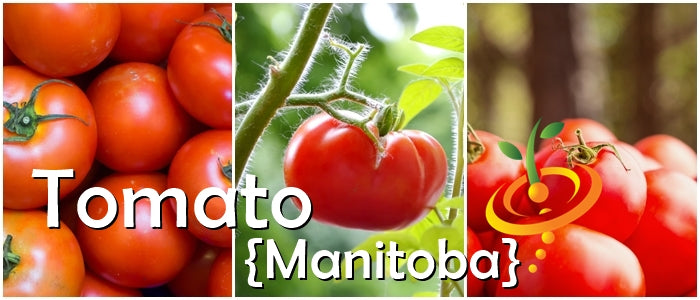
The Manitoba Tomato is an early producer, so it’s good for cooler climates with short growing seasons. Not to say that gardeners in warmer climates with long growing seasons can’t grow it. Basically, anyone in a grow zone that isn’t freezing or blazing for a couple of months can grow this tangy, juicy slicer. And it doesn’t even need a lot of garden space.
- Early producer—only 55 days
- Good for containers
- High yields
- Good for cooler climates
SEED PLANTING TIPS
- Botanical name: Solanum lycopersicum
- Growth type: Determinate, tomato cage support, no pruning
- Tomato size: Medium
- Depth to plant seeds: .25" deep
- Spacing between plants: 24" apart
- Spacing between rows: 36"-48" apart
- Days to germinate (sprout): 7-14 days
- Germination soil temps: 75F-95F
- Soil needs: 6.0-6.5 pH
- Sun needs: Full sun
- Frost hardy: No
- Planting season: Spring, summer
- # of plants per sq. ft.: Appx. 1 plant per 2 sq. ft.
- Days to maturity: 55-65 days
Click here to view our full Tomato grow guide
Good companion plants: Basil, Borage, Onion, Parsley, Pepper
Nasturtium - Empress of India Flowers
From $399 USDUnit price /UnavailableDescription
Large scarlet blooms will grow on this attractive 1 foot tall, compact plant.
- Nasturtium flowers are one of the most popular edible flowers grown in home gardens. The petals have a slight peppery taste, and the seeds and leaves are also edible! You can even use the seeds as an alternative to capers.
- Not only are the flowers pretty, Nasturtiums are great companion plants! They are also known to deter aphids, whiteflies, cucumber beetles & more. Learn more >
- Nasturtiums should be planted in the spring for a "summer show". Plant in full sun, and in sandy, well drained soil. Generally, the poorer the soil quality, the more flowers the plant will produce! Deadhead your plants regularly to encourage new blooms, all season long. These flowers will self-seed resulting in more flowers for years to come!
- These are PERFECT for beginner gardeners! These annuals are very easy to grow from seed and can be grown just about anywhere, even places that are susceptible to drought.
- The bright flower petals will liven up any garden, with very little effort! They are also GREAT for planting in hanging baskets or containers.
Nasturtium - Dwarf Jewel Mix Flowers
From $399 USDUnit price /UnavailableDescription
Fragrant, colorful mix of dwarf flowers in a compact plant usually getting no taller than 12 inches.
- Nasturtium flowers are one of the most popular edible flowers grown in home gardens. The petals have a slight peppery taste, and the seeds and leaves are also edible! You can even use the seeds as an alternative to capers.
- Not only are the flowers pretty, Nasturtiums are great companion plants! They are also known to deter aphids, whiteflies, cucumber beetles & more. Learn more >
- Nasturtiums should be planted in the spring for a "summer show". Plant in full sun, and in sandy, well drained soil. Generally, the poorer the soil quality, the more flowers the plant will produce! Deadhead your plants regularly to encourage new blooms, all season long. These flowers will self-seed resulting in more flowers for years to come!
- These are PERFECT for beginner gardeners! These annuals are very easy to grow from seed and can be grown just about anywhere, even places that are susceptible to drought.
- The bright flower petals will liven up any garden, with very little effort! They are also GREAT for planting in hanging baskets or containers.
Sprouts/Microgreens - Cilantro/Coriander Splits
From $499 USDUnit price /UnavailableDescription
We offer the highest quality cilantro micro green sprout seeds! These sprouts are a great ingredient to add to any dish for added flavor and nutrition. Sure to be your new favorite! Very easy to grow. Ready to consume after just a couple of days.
Tomato - Green Grape (Indeterminate)
From $299 USDUnit price /UnavailableDescription

The Green Grape Tomato produces clusters of 6-8 fruits on a compact plant all summer long. The slightly oblong 1" fruits turn a light yellow-green when ripe, with a sweet, sharp flavor that’s a bit like citrus. These look so much like green grapes, you may be tempted to make vino de tomato verde, but please resist.
- Sweet, citrus flavor
- Reliable producer
- High yields
- Good for containers
SEED PLANTING TIPS
- Botanical name: Solanum lycopersicum
- Growth type: Indeterminate, trellis support, regular pruning
- Tomato size: Small (1" oval)
- Depth to plant seeds: 1/8" deep
- Spacing between plants: 24" apart
- Spacing between rows: 36"-48" apart
- Days to germinate (sprout): 7-14 days
- Germination soil temps: 75F-95F
- Soil needs: 6.0-6.5 pH
- Sun needs: Full sun
- Frost hardy: No
- Planting season: Spring, summer
- # of plants per sq. ft.: Appx. 1 plant per 2 sq. ft.
- Days to maturity: 70-80 days
Click here to view our full Tomato grow guide
Good companion plants: Basil, Borage, Onion, Parsley, Pepper
- From $399 USDUnit price /Unavailable
Description

The Violet Star Artichoke is a dramatic alternative to the traditional Green Globe Artichoke. It produces a vibrant purple flower bud with a nutty flavor and creamy texture. Choose a sunny spot in your garden with lots of room for this dark beauty to grow. Artichokes are perennial plants that keep coming back bigger and more productive every year.
- Heat tolerant
- Drought tolerant
- Usually produces in 2nd year
- Perennial
- From $299 USDUnit price /Unavailable
Description
- These tomatillo seeds will produce delicious 3-5 ounce fruits.
- Tomatillo is popularly used to make salsas.
- Days to Maturity | 85 days
- These tomatillo seeds will produce delicious 3-5 ounce fruits.
Eggplant - Long Green Louisiana
From $299 USDUnit price /UnavailableDescription

- Solanum melongena. Produces excellent yields of 9" long/glossy light green eggplants
- White flesh
- Very delicious with nutty flavor and no bitterness
- Excellent for Creole fish stew and other culinary creations -
Days to Maturity | 65 days
-
Eggplant Seeds | Start seed indoors to allow at least 10 weeks for young plants to develop. Plant in rows 3 feet apart, with 2 feet between plants.
Click here for complete Eggplant grow guide
- Solanum melongena. Produces excellent yields of 9" long/glossy light green eggplants
Pepper (Hot) - Scotch Bonnet, Red 🔥🔥🔥
From $499 USDUnit price /UnavailableDescription

The Red Scotch Bonnet Pepper is so named because its defined lobes resemble a Scotsman’s tam o’ shanter hat. Also called the Caribbean Red Pepper, the stout little fruit is sweeter and fruitier than its cousin, the Habanero, and hot enough to make a bird fly north for the winter. The plant puts out loads of 1"-2" green waxy fruits with thin skin that ripen through yellow, orange, and red. Its extreme heat and unique flavor is traditionally used in Caribbean hot sauce and jerk seasoning, but will be just as tasty and burn just as hot in any of your recipes.- High yields
- Fresh, fruity flavor
- Harvest any color
- Good for containers
SEED PLANTING TIPS
- Botanical name: Capsicum chinense
- Pepper length: 1"-2"
- Scoville heat units (SHU): 100,000-350,000/hot
- Plant support: Tomato cage or stake
- Depth to plant seeds: .25" deep
- Spacing between plants: 18"-24" apart
- Spacing between rows: 24"-36" apart
- Days to germinate (sprout): 7-21 days
- Germination soil temps: 75F-85F
- Soil needs: 6.0-7.0 pH
- Sun needs: Full sun
- Frost hardy: No
- Planting season: Spring, summer
- # of plants per sq. ft.: Appx. 1 plant per sq. ft.
- Days to maturity: 90-120 days
Good companion plants: Basil, Carrot, Cucumber, Eggplant, Okra, Rosemary, Sage, Squash, Tomato
All Peppers ⟐ Hot Peppers 📚 Hot Peppers Grow Guide - From $299 USDUnit price /Unavailable
Description
- These tomatillo seeds will produce delicious 3-5 ounce fruits.
- Tomatillo is popularly used to make salsas.
- Days to Maturity | 85 days
- These tomatillo seeds will produce delicious 3-5 ounce fruits.
Tomato - Oxheart, Orange (Indeterminate)
From $299 USDUnit price /UnavailableDescription
The Orange Oxheart Tomato is what you call eye candy. High yields of deep orange heart-shaped fruits glowing against a backdrop of emerald green leaves provide a stunning visual in any garden. They’re tasty, too. Meaty, fruity, juicy slicers grow and ripen all summer long, giving you more time for more eyefuls.
You may also like: Pink Oxheart Tomatoes ⟐ Yellow Oxheart Tomatoes- Sweet and juicy
- Small seed core
- High yields
- Good fresh and cooked
SEED PLANTING TIPS
- Botanical name: Solanum lycopersicum
- Growth type: Indeterminate, trellis support, regular pruning
- Tomato size: Large (1-2 lbs.)
- Depth to plant seeds: .25" deep
- Spacing between plants: 24" apart
- Spacing between rows: 36"-48" apart
- Days to germinate (sprout): 7-14 days
- Germination soil temps: 75F-95F
- Soil needs: 6.0-6.5 pH
- Sun needs: Full sun
- Frost hardy: No
- Planting season: Spring, summer
- # of plants per sq. ft.: Appx. 1 plant per 2 sq. ft.
- Days to maturity: 75-85 days
Click here to view our full Tomato grow guide
Good companion plants: Basil, Borage, Onion, Parsley, Pepper
Sunflower, Chocolate Cherry Flowers
From $399 USDUnit price /UnavailableDescription
- From $299 USDUnit price /Unavailable
Description
- These tomatillo seeds will produce delicious 3-5 ounce fruits.
- Tomatillo is popularly used to make salsas.
- Days to Maturity | 85 days
- These tomatillo seeds will produce delicious 3-5 ounce fruits.

🌱 Featured Seed Types (A - Z)
View allcontinue shopping




































































































